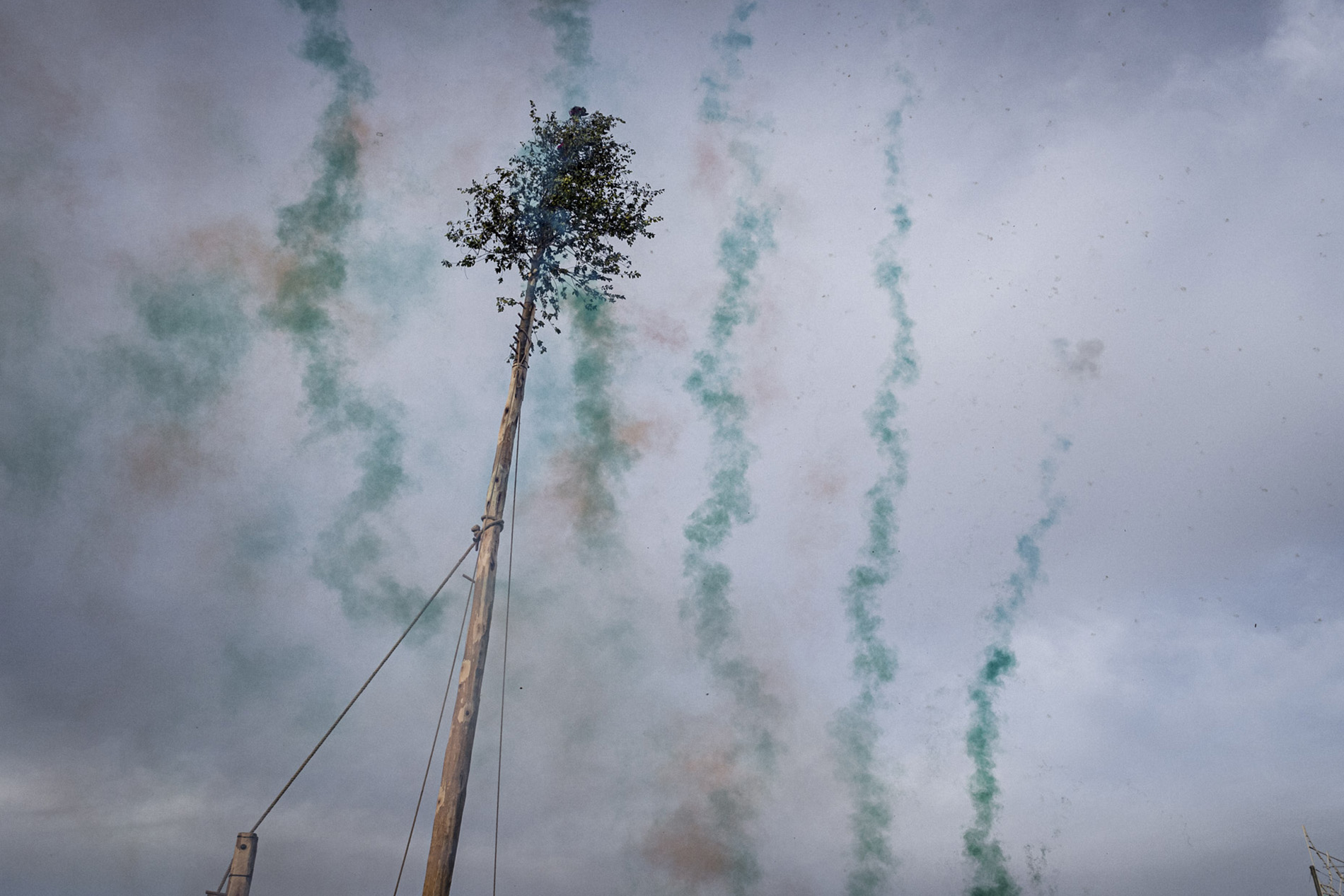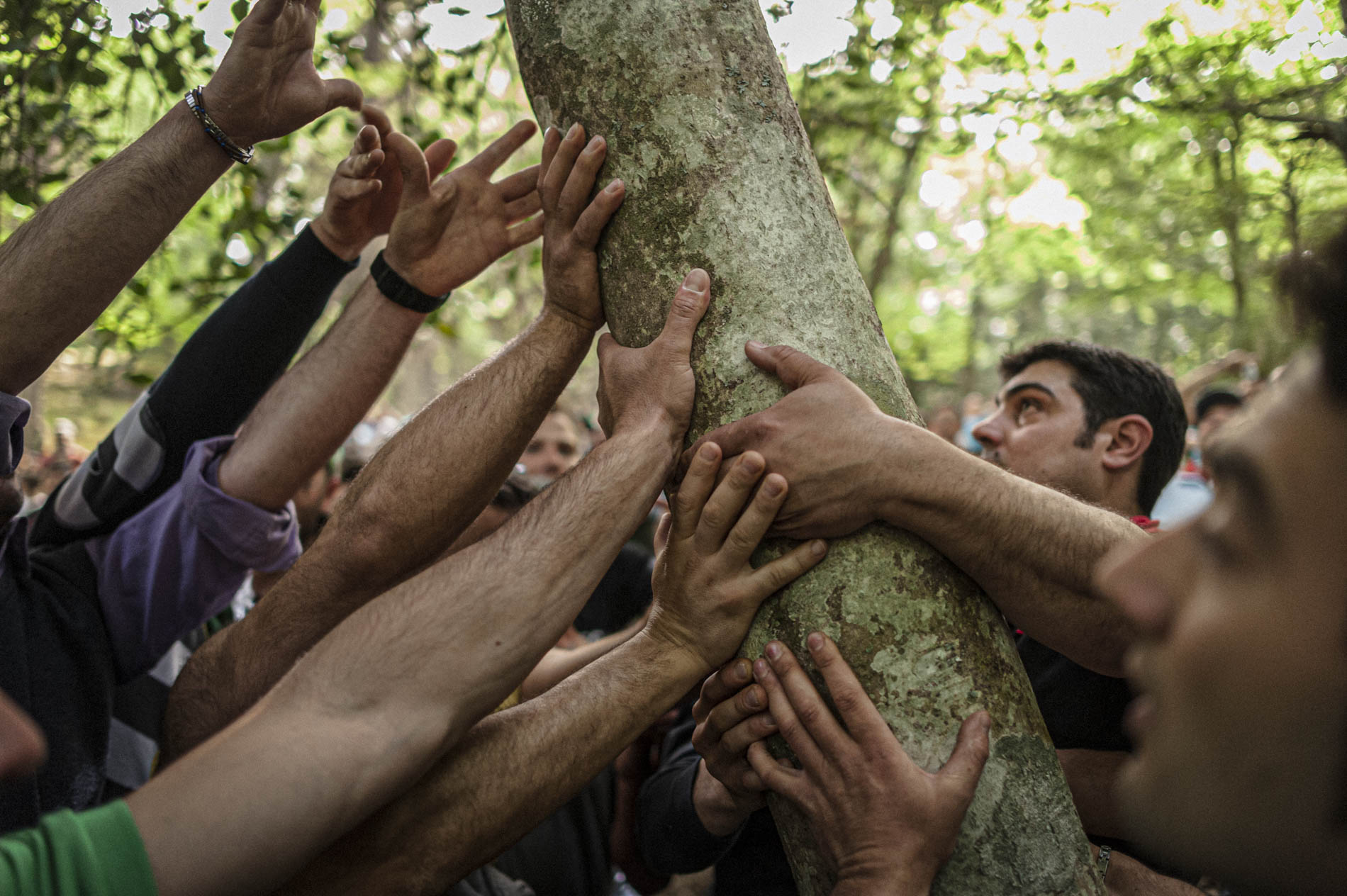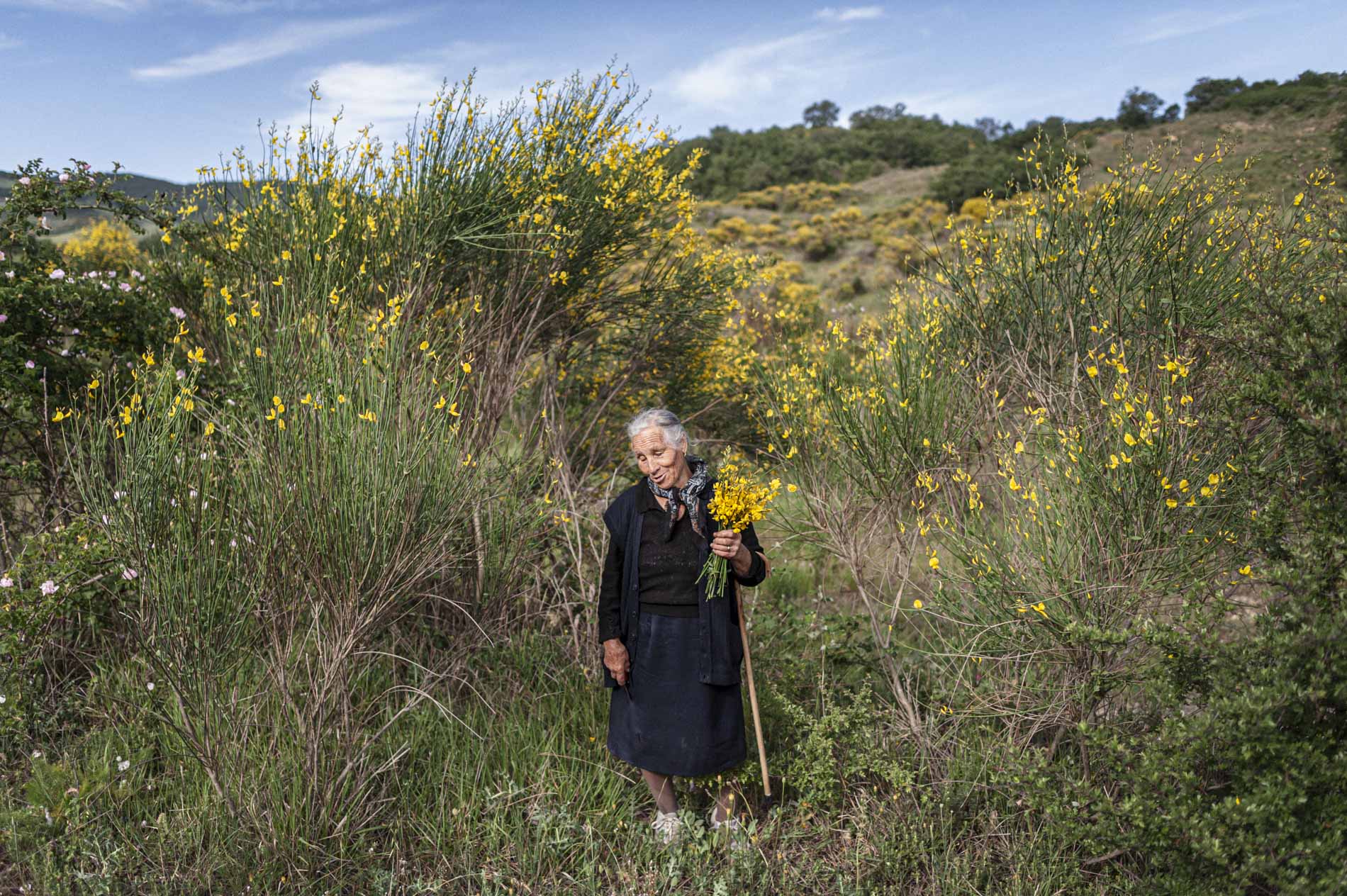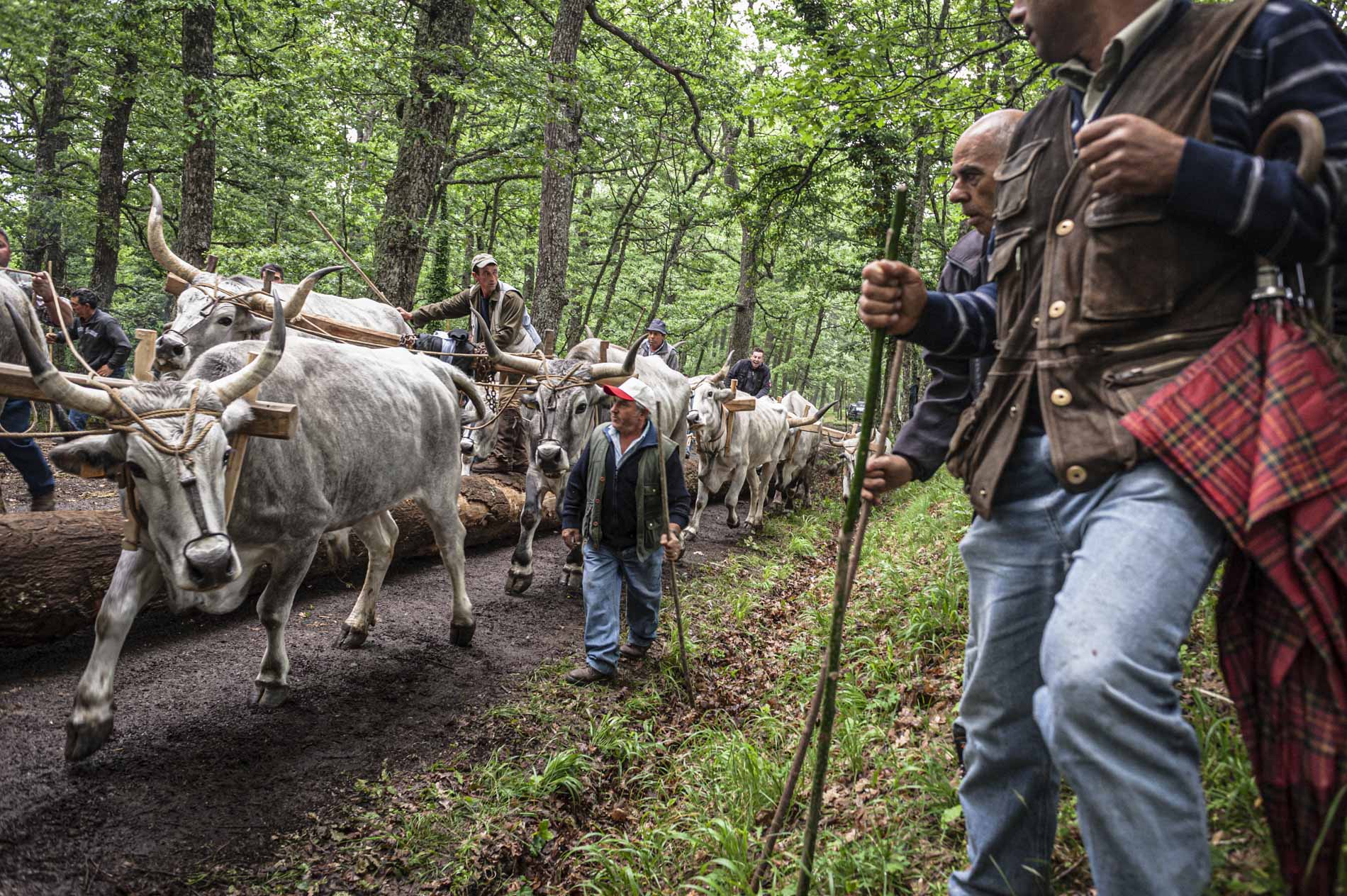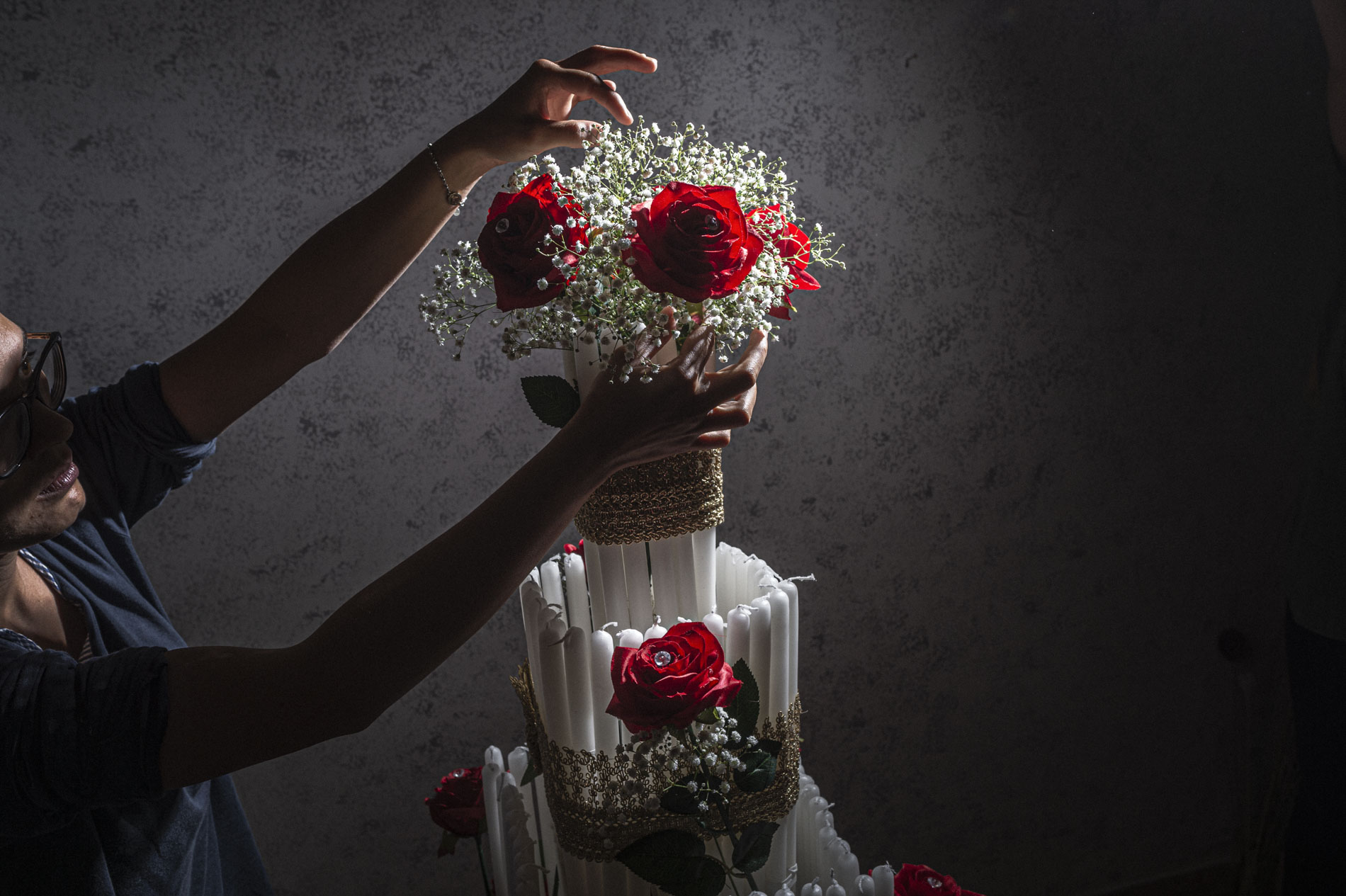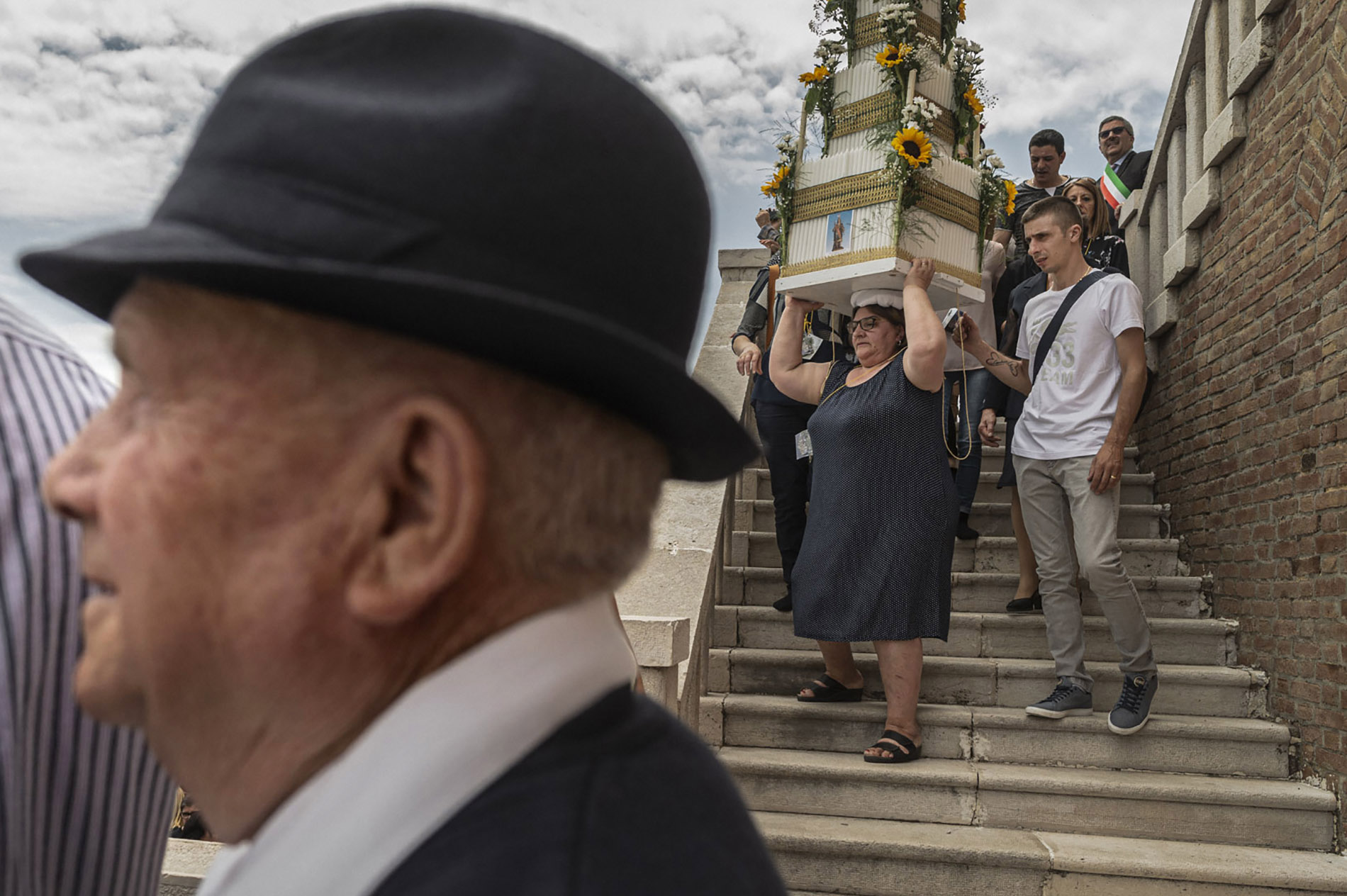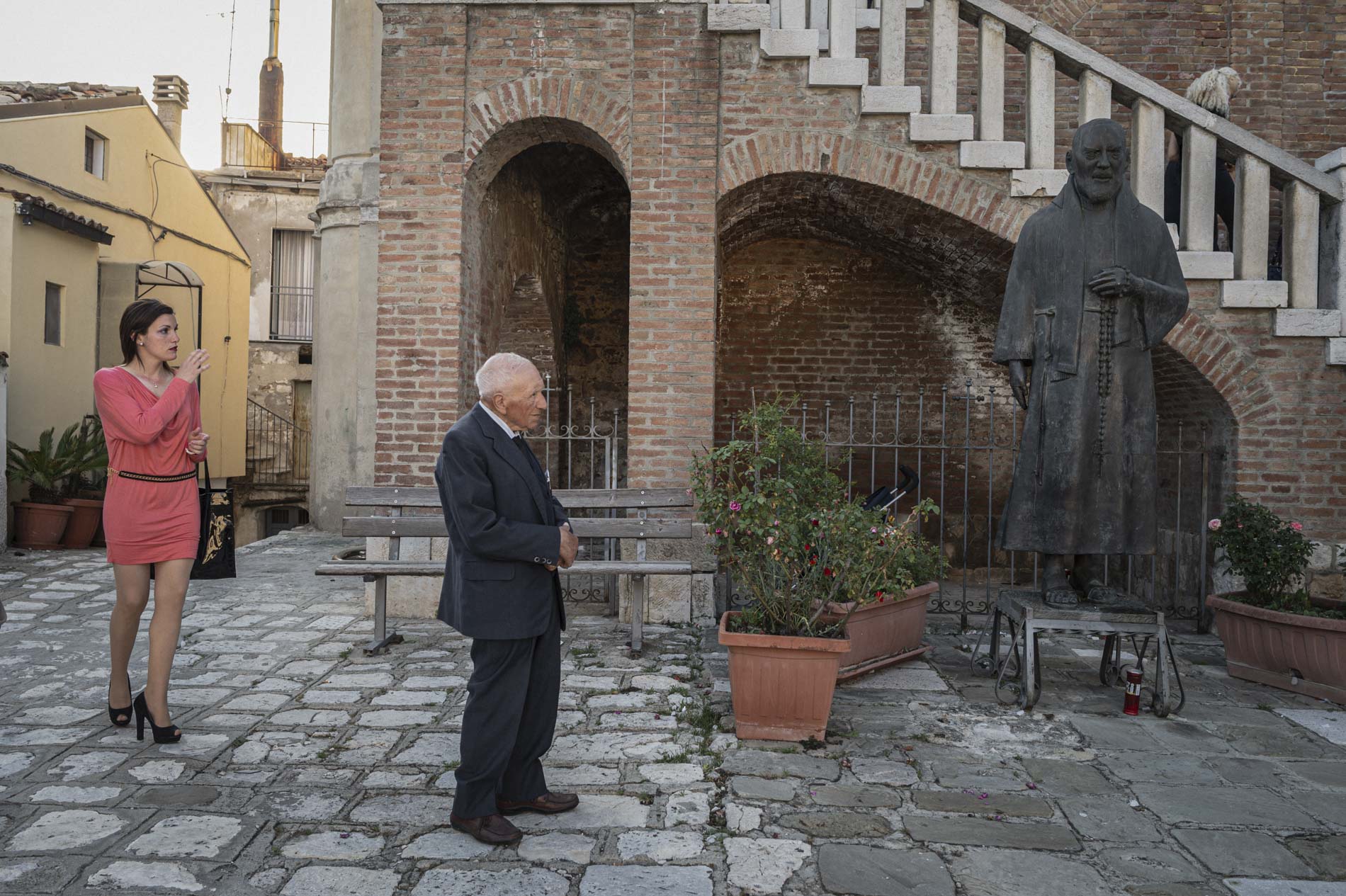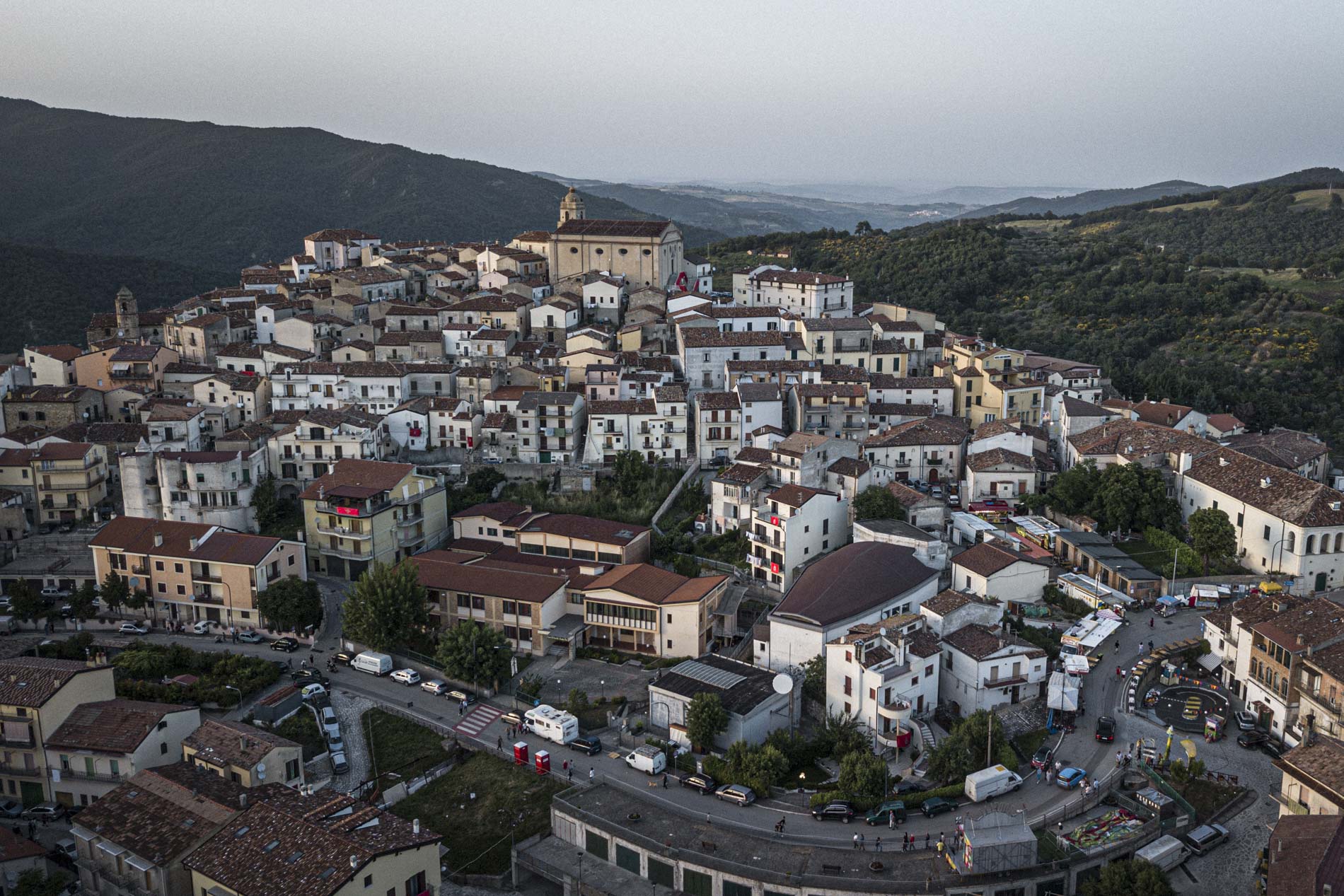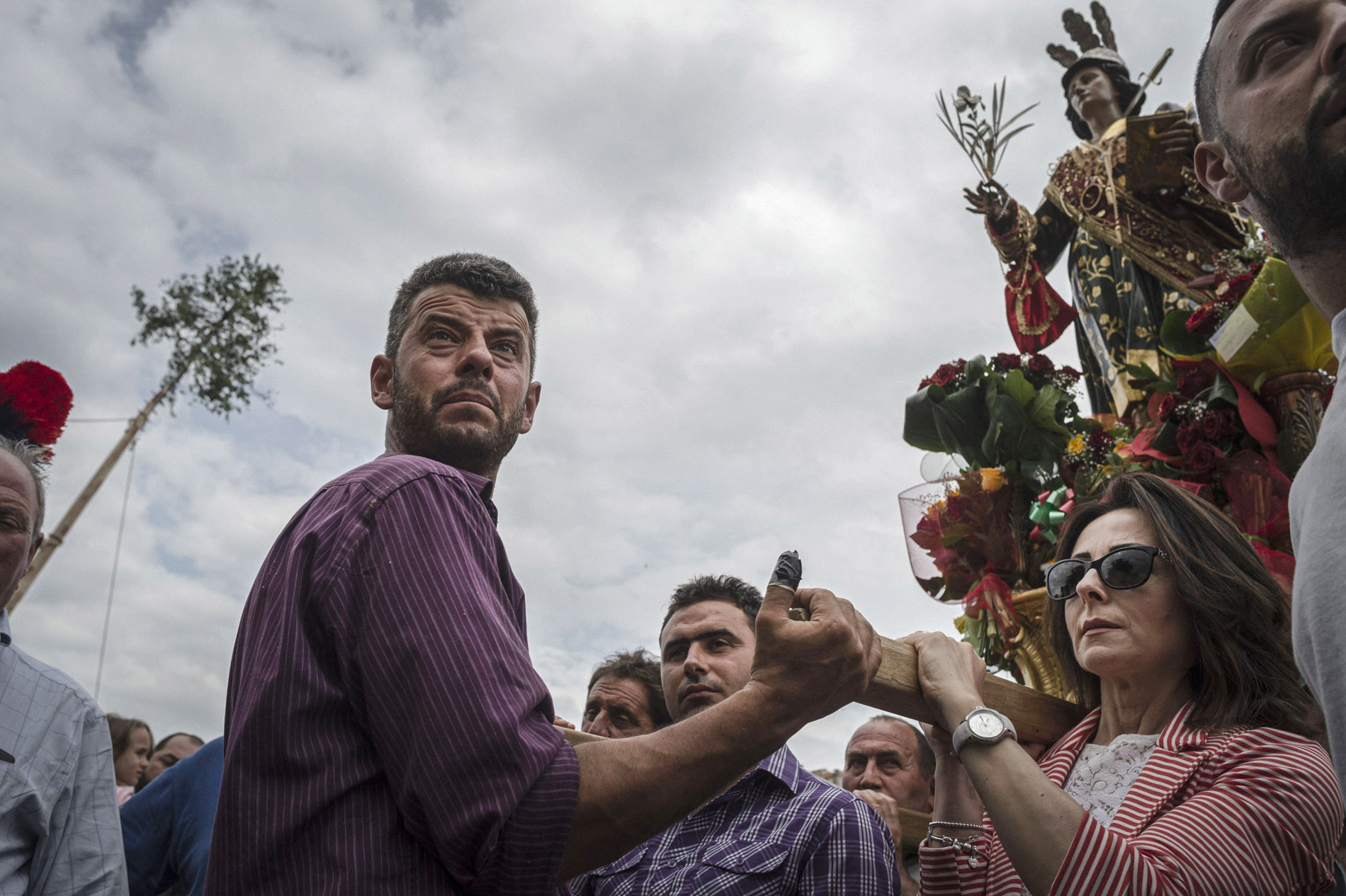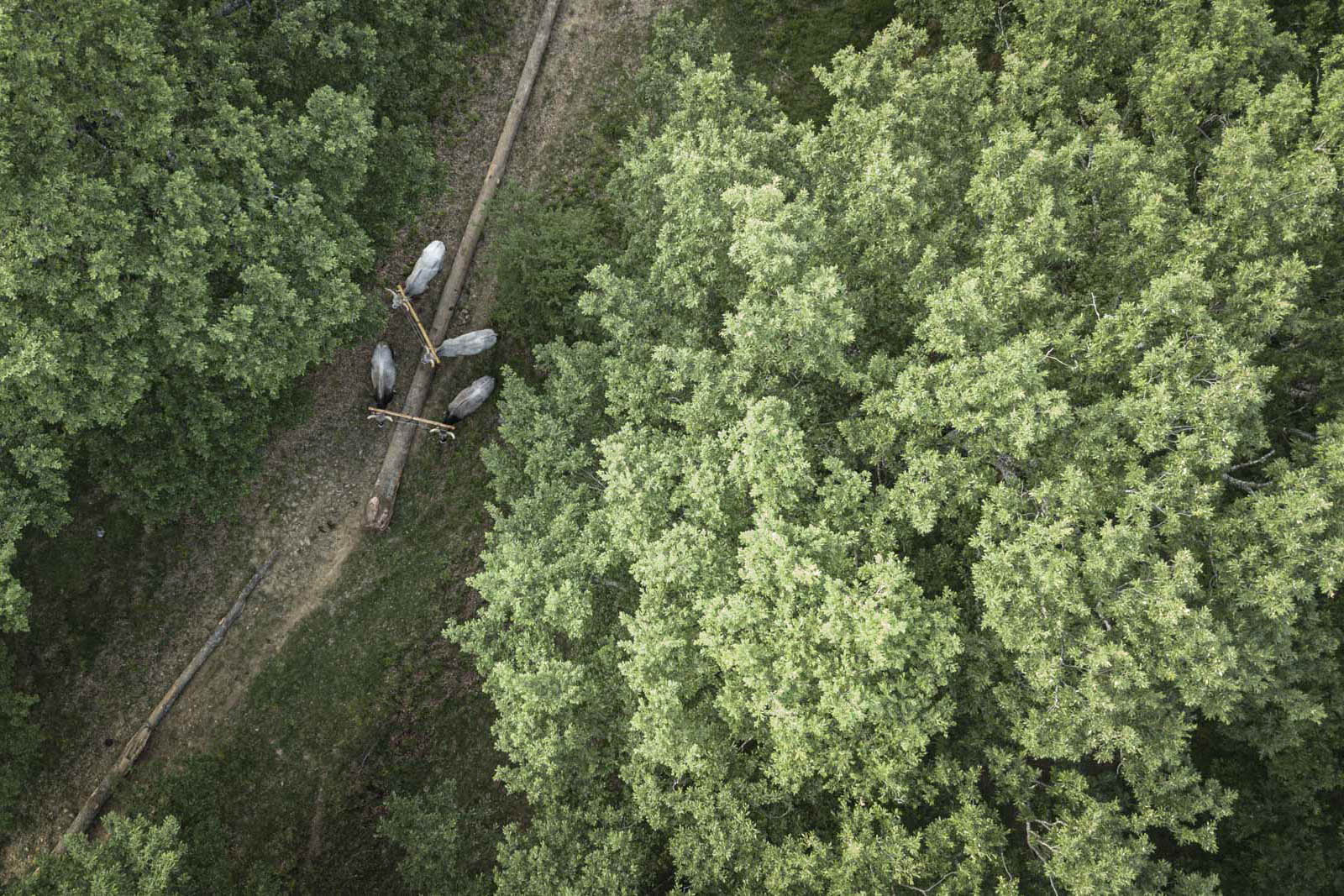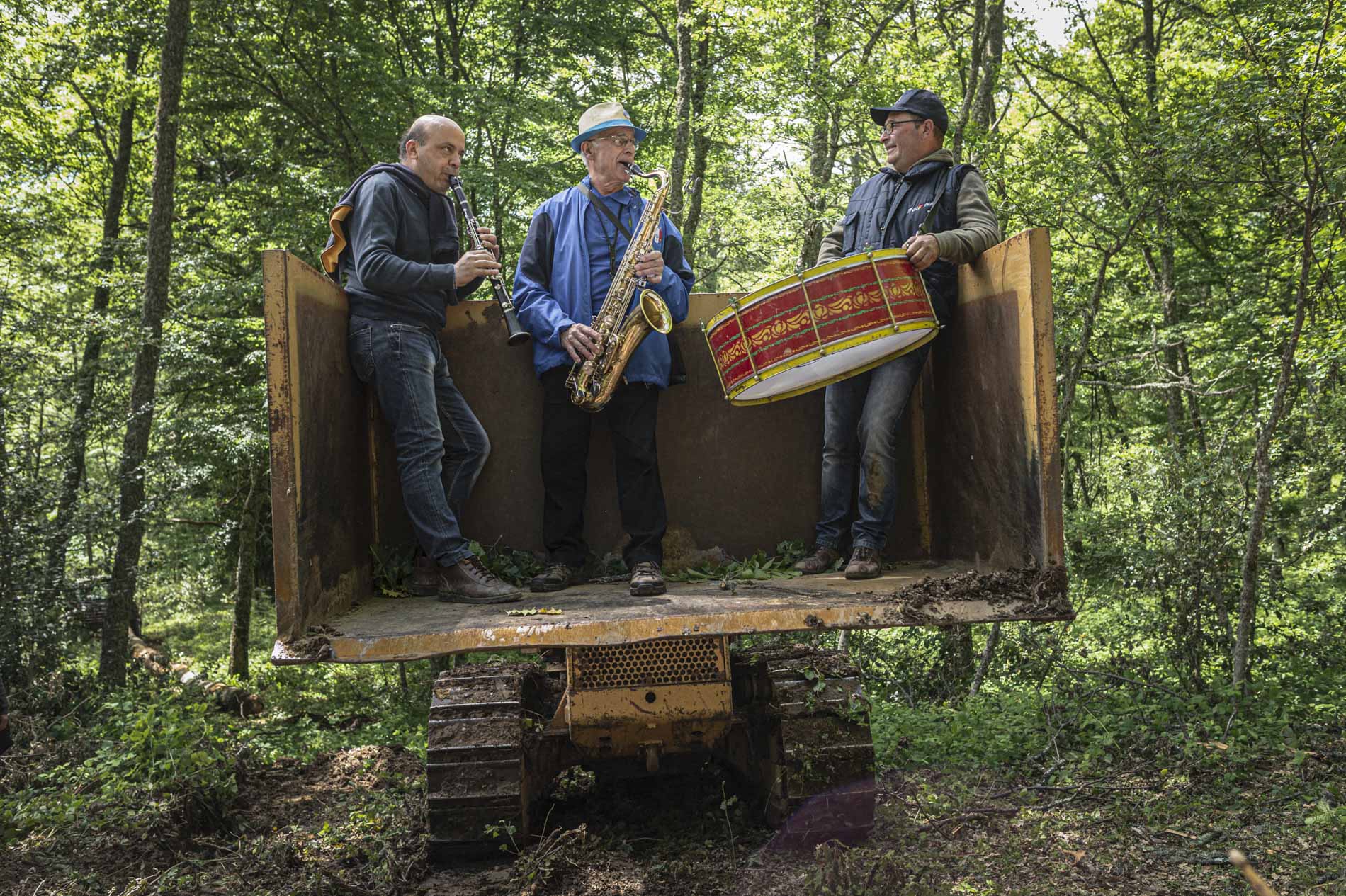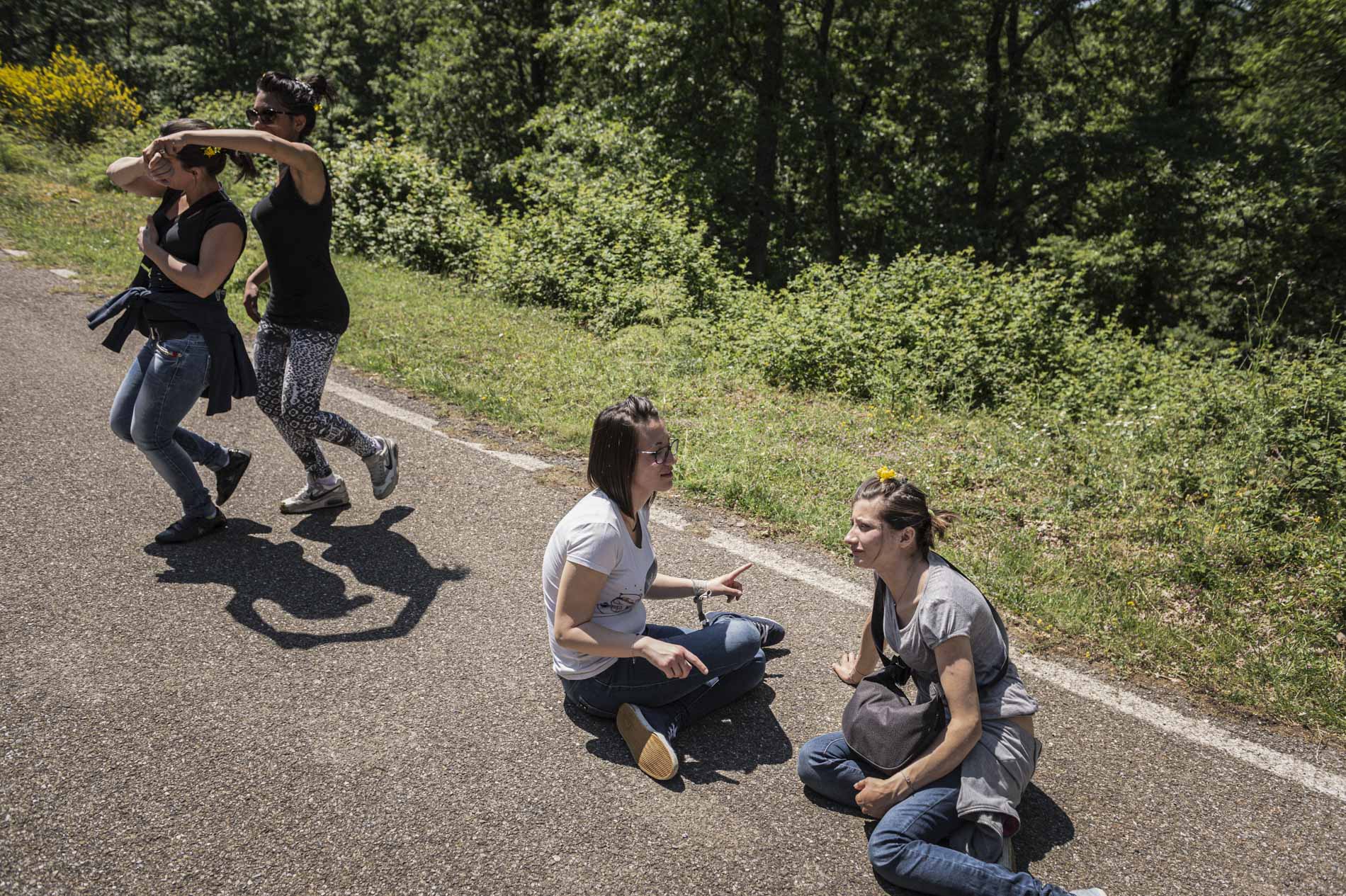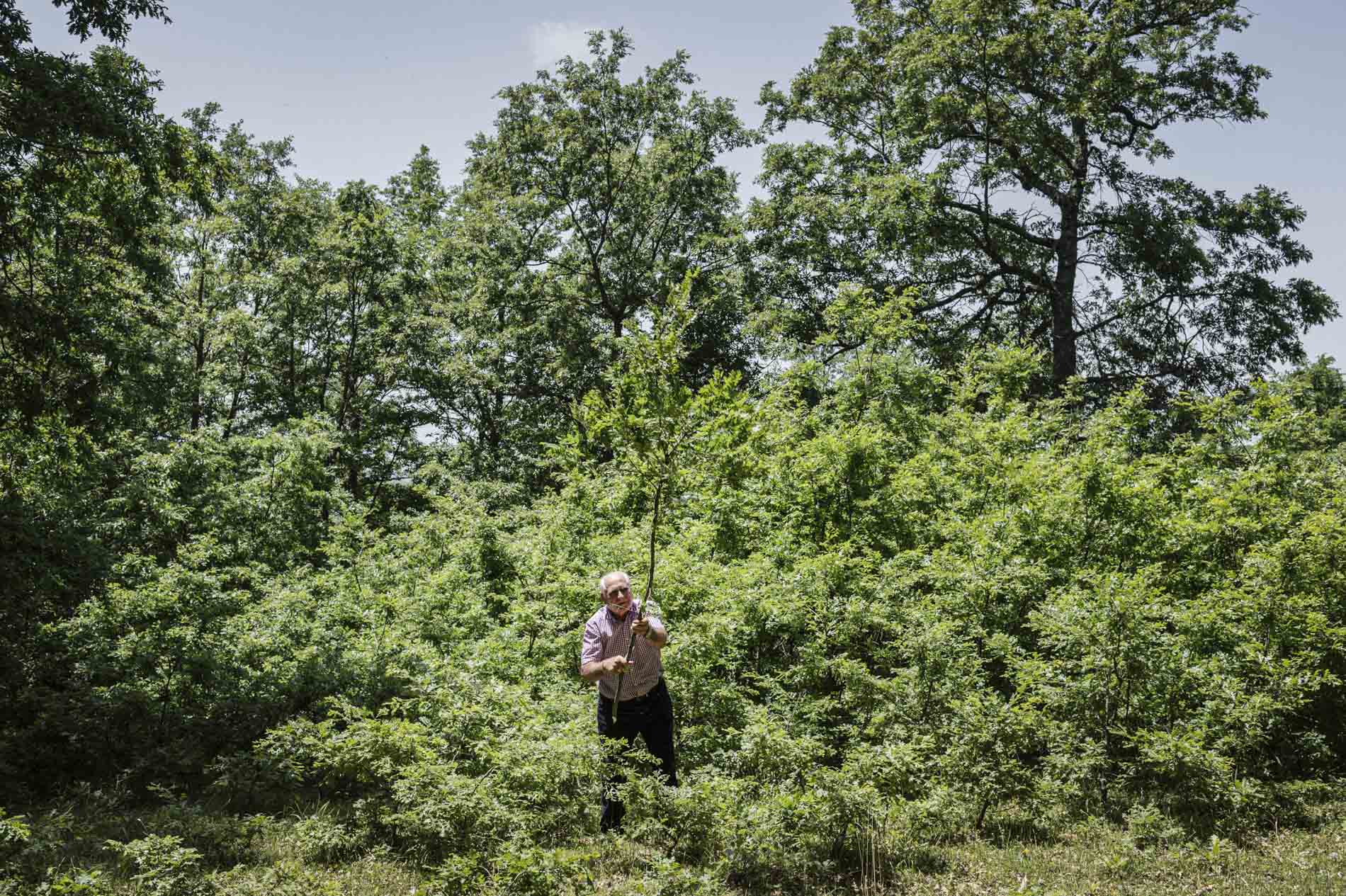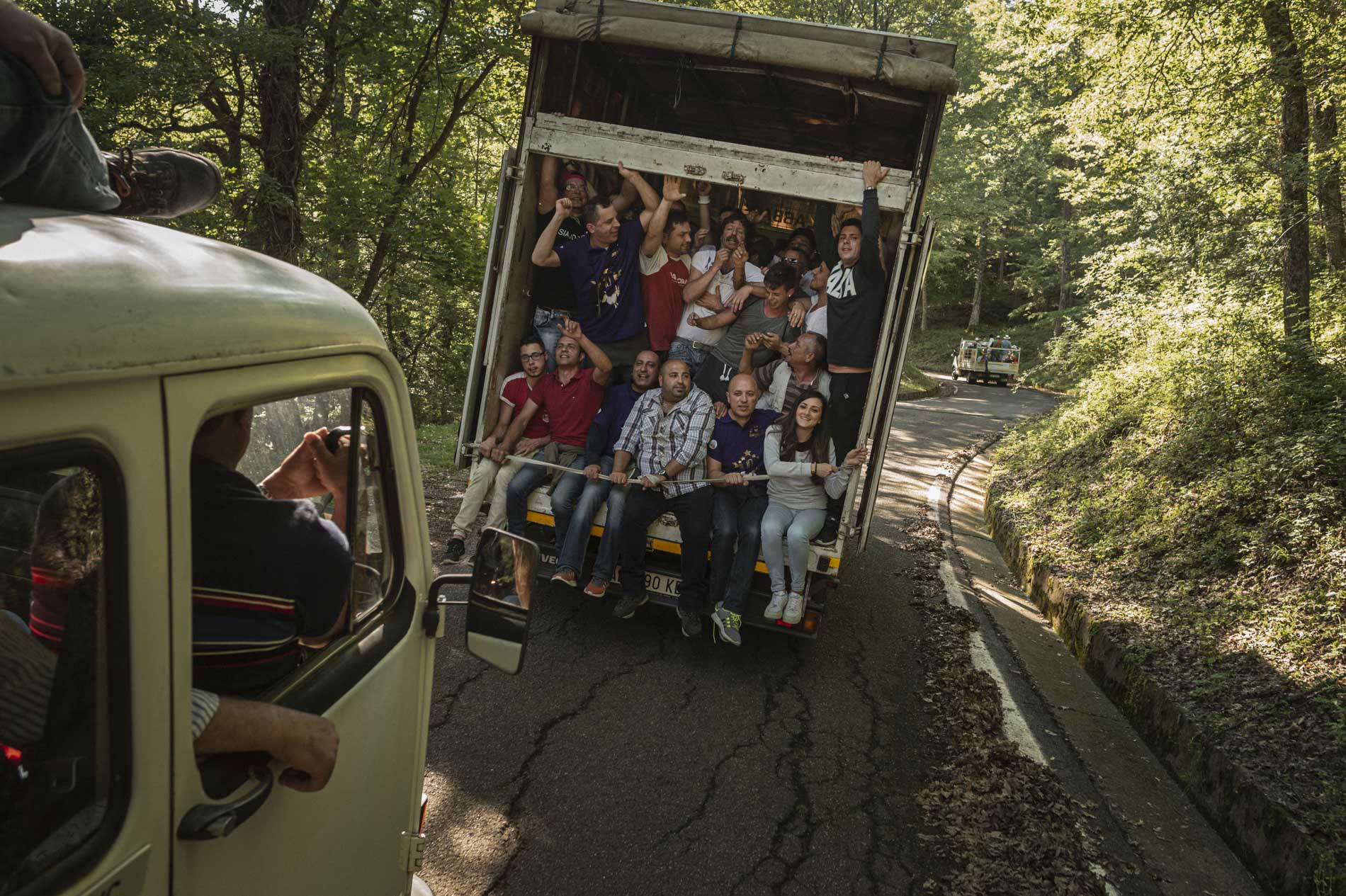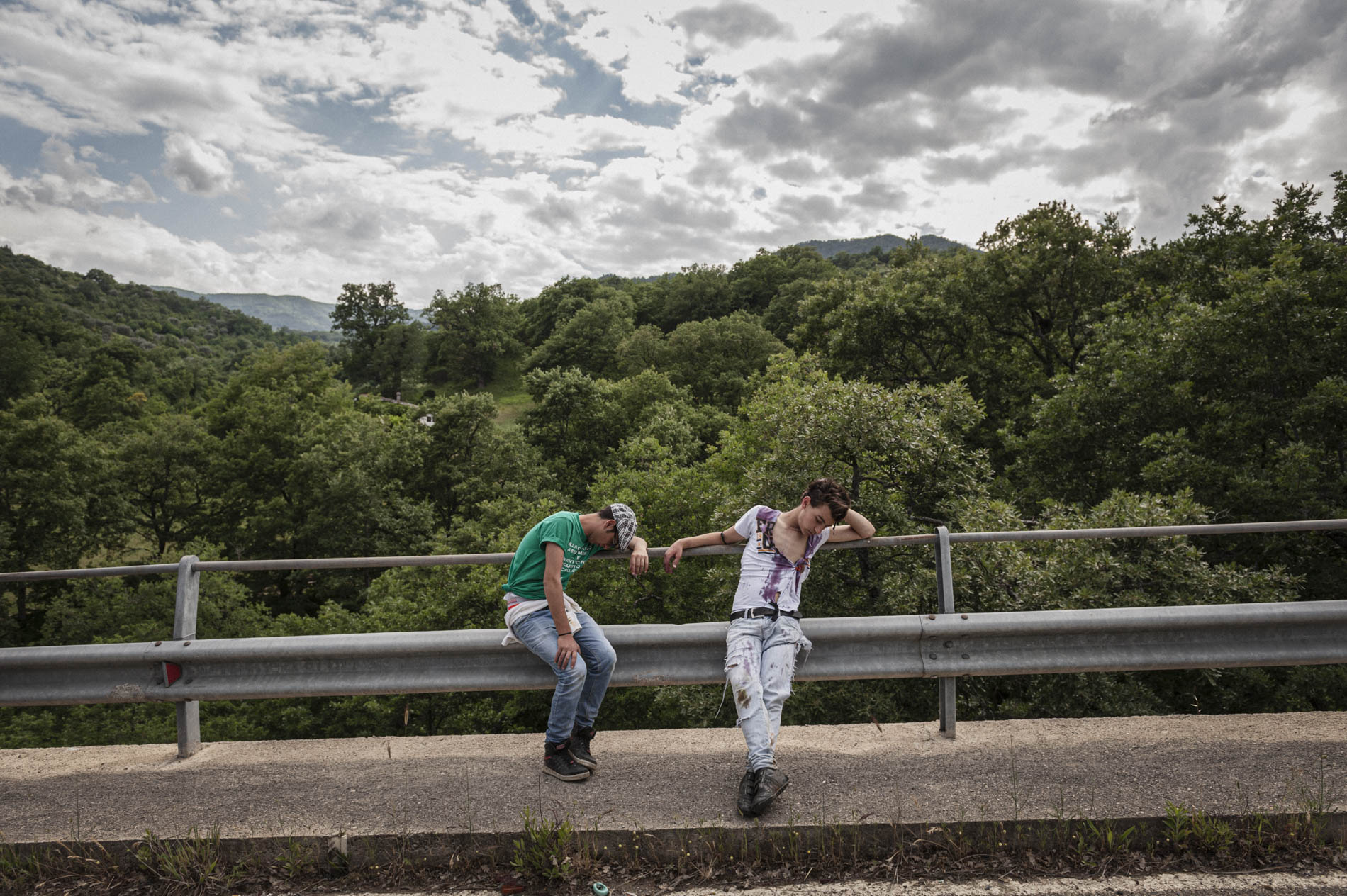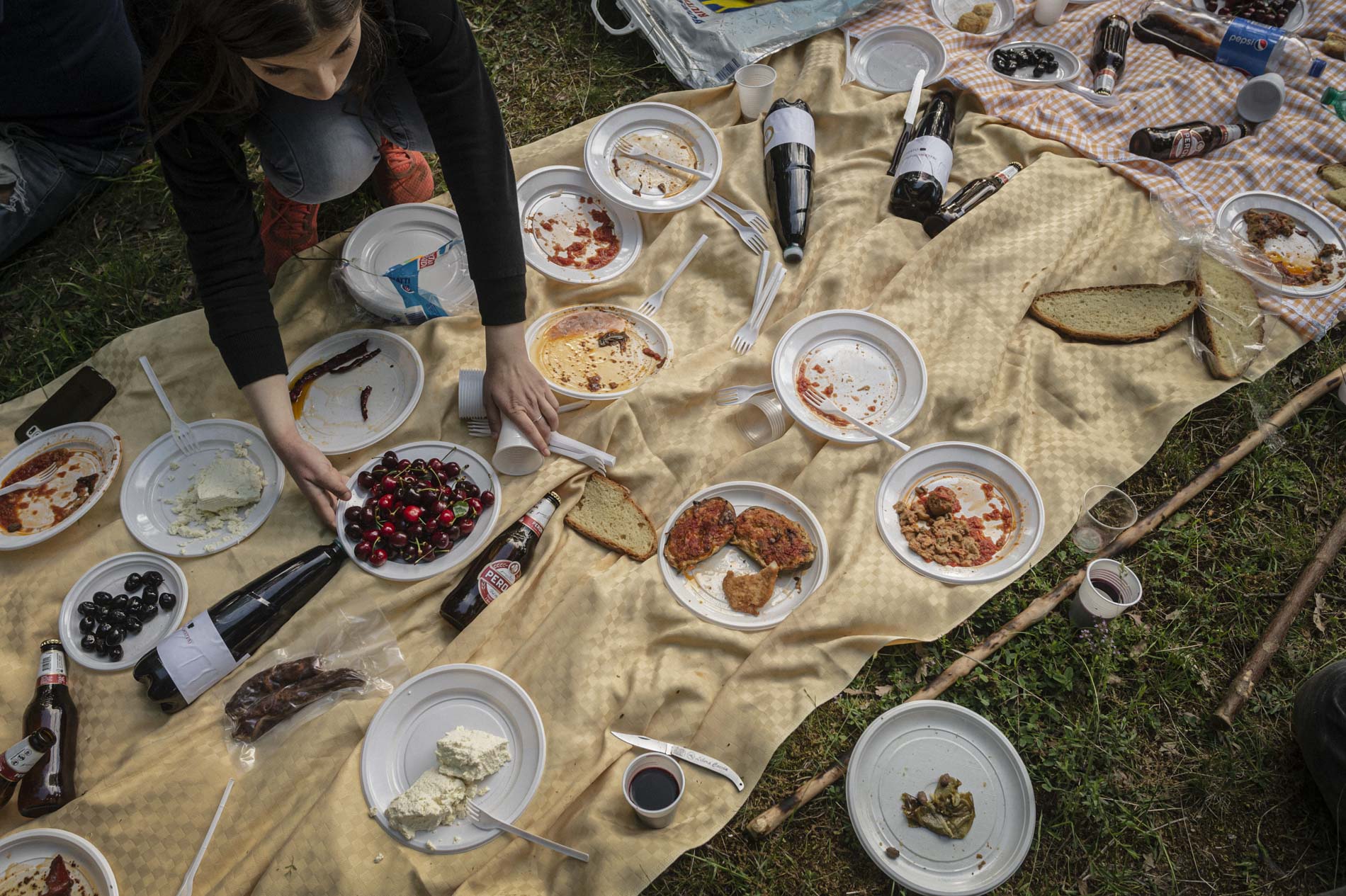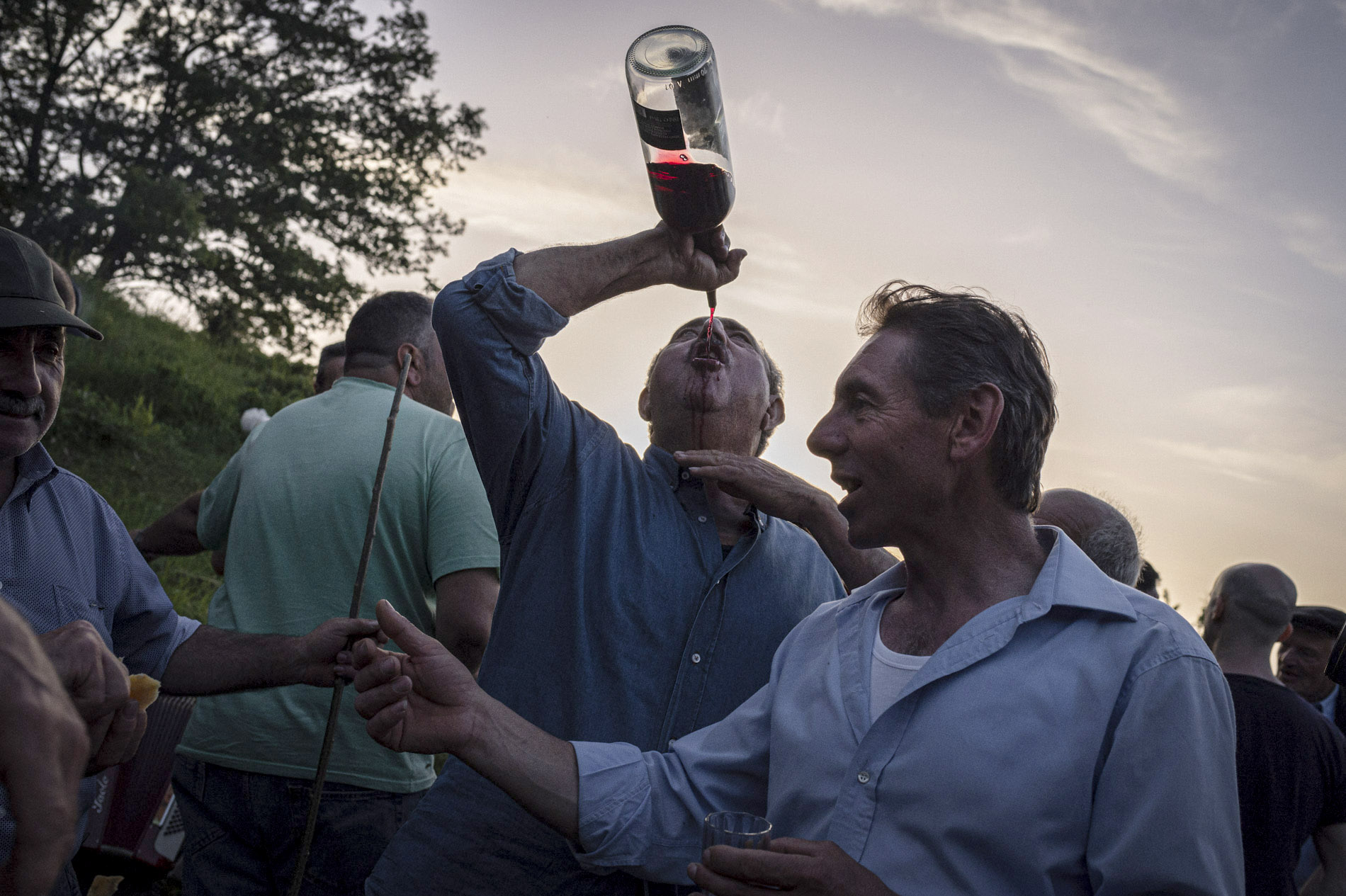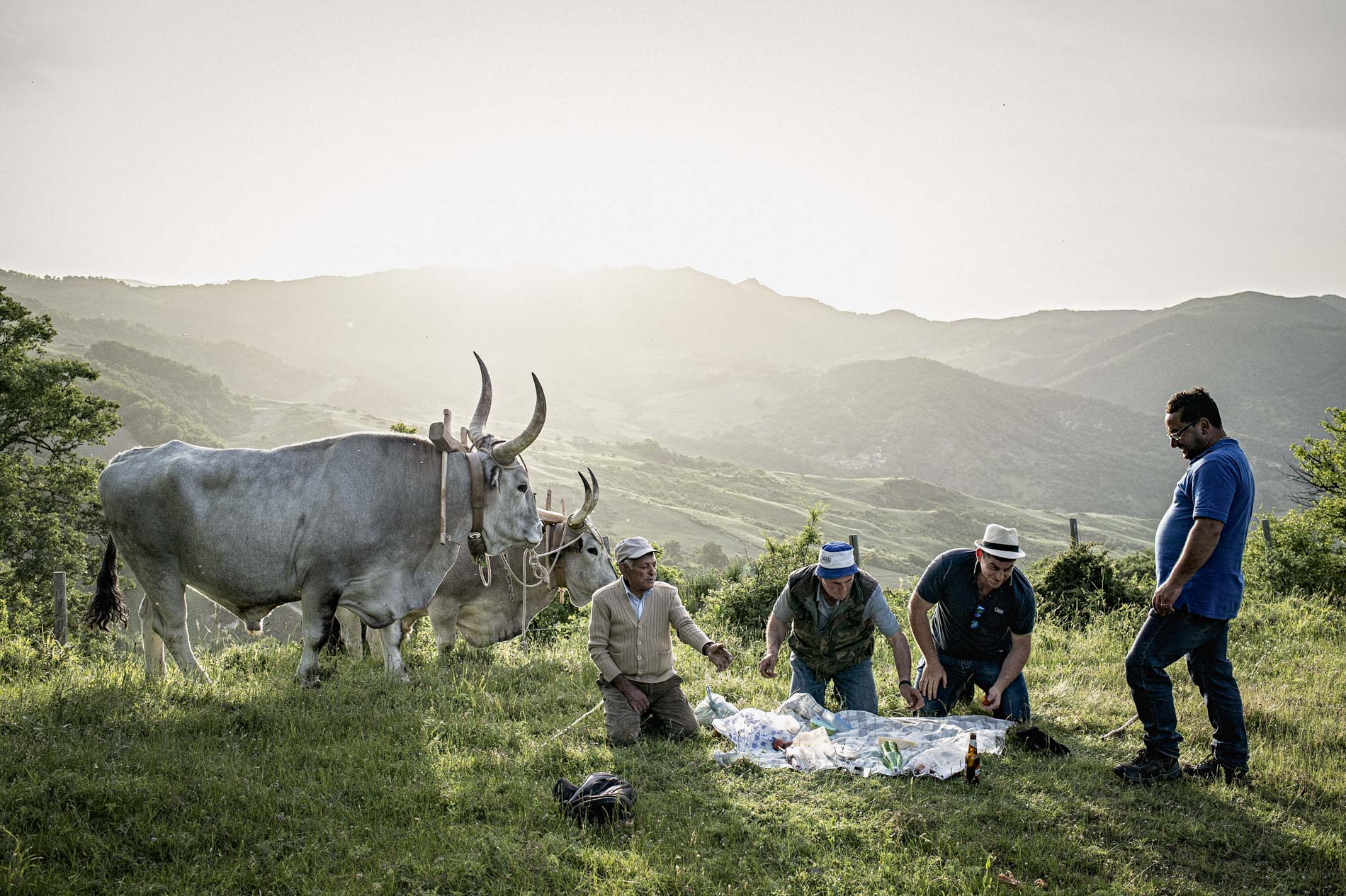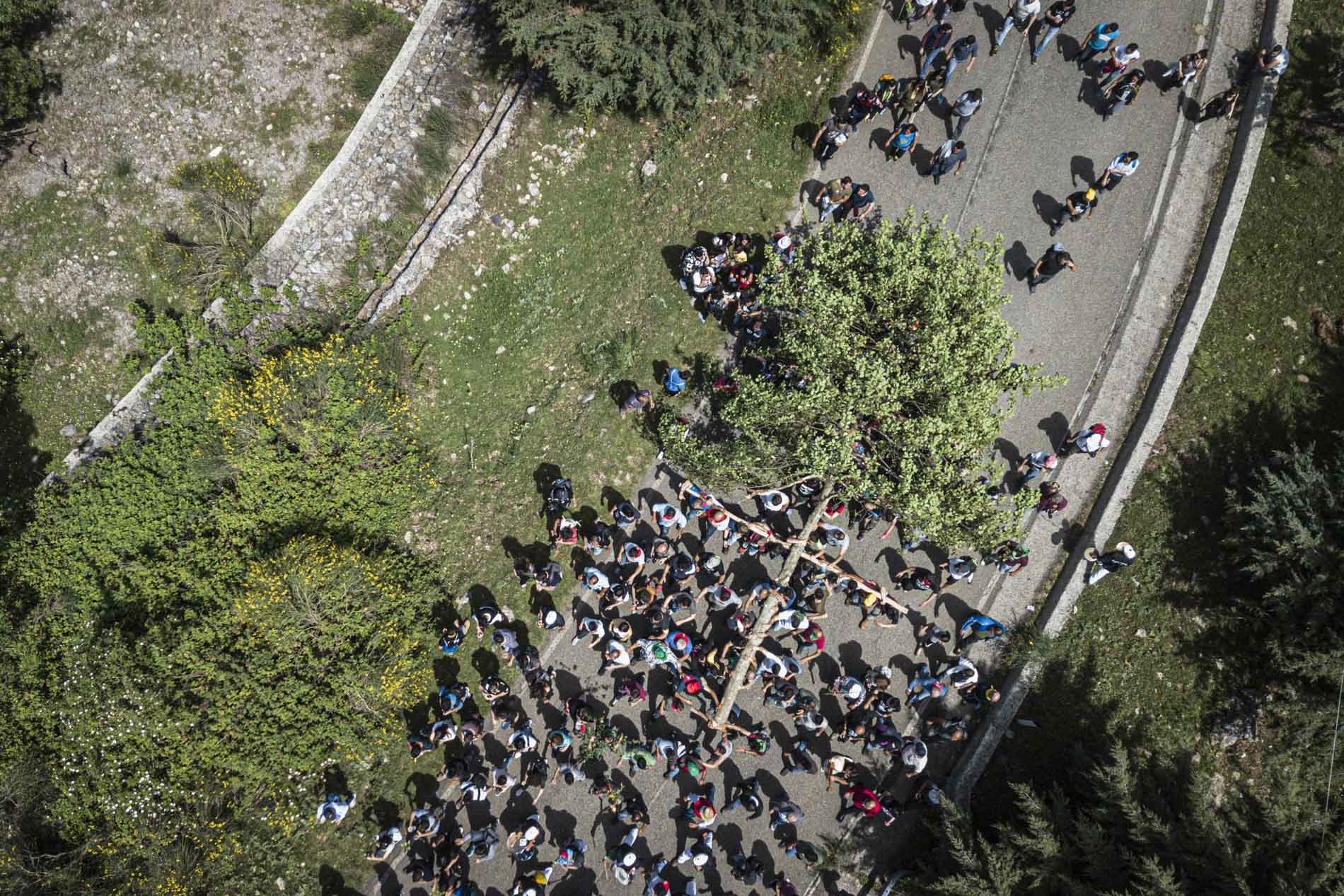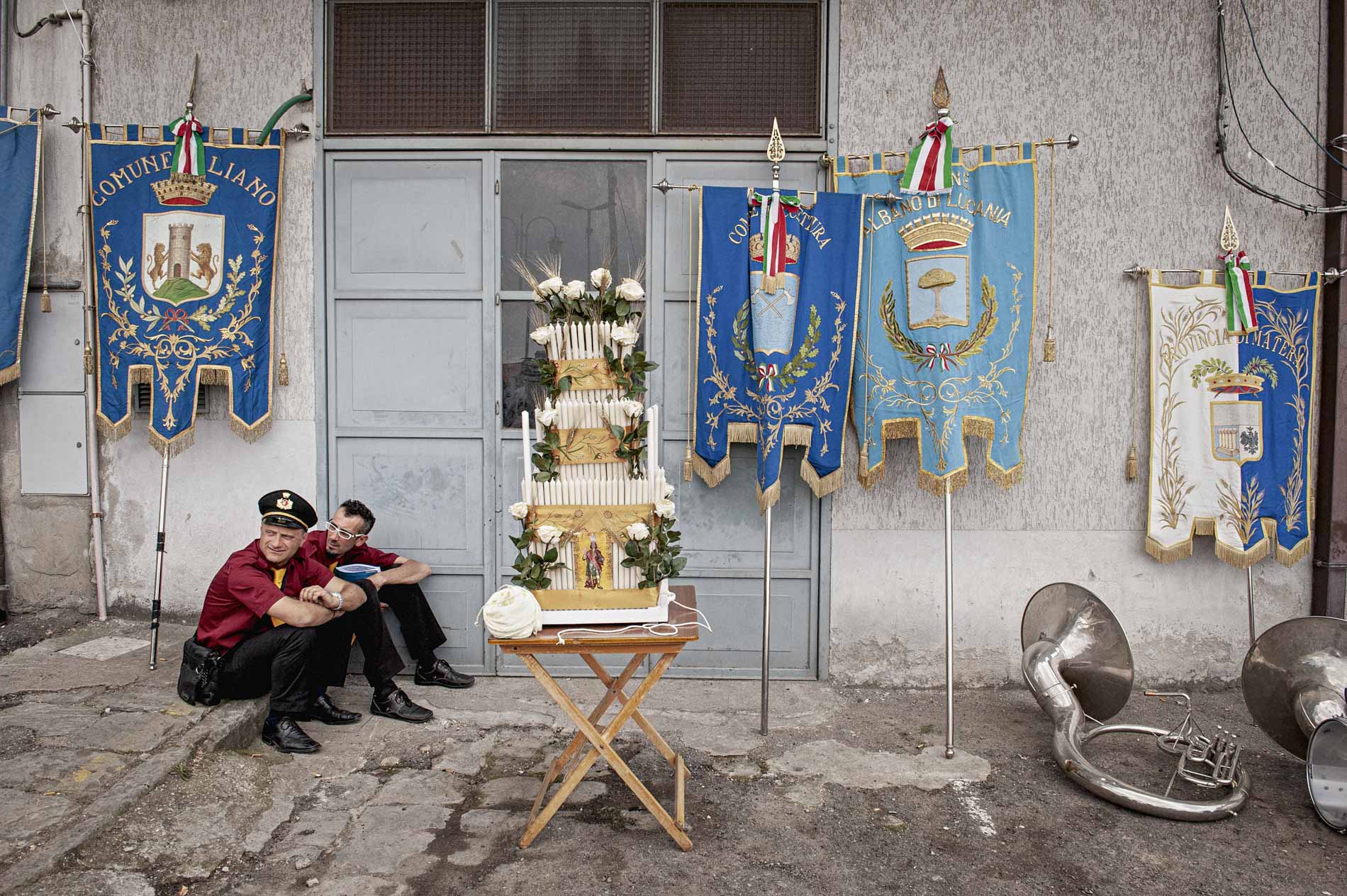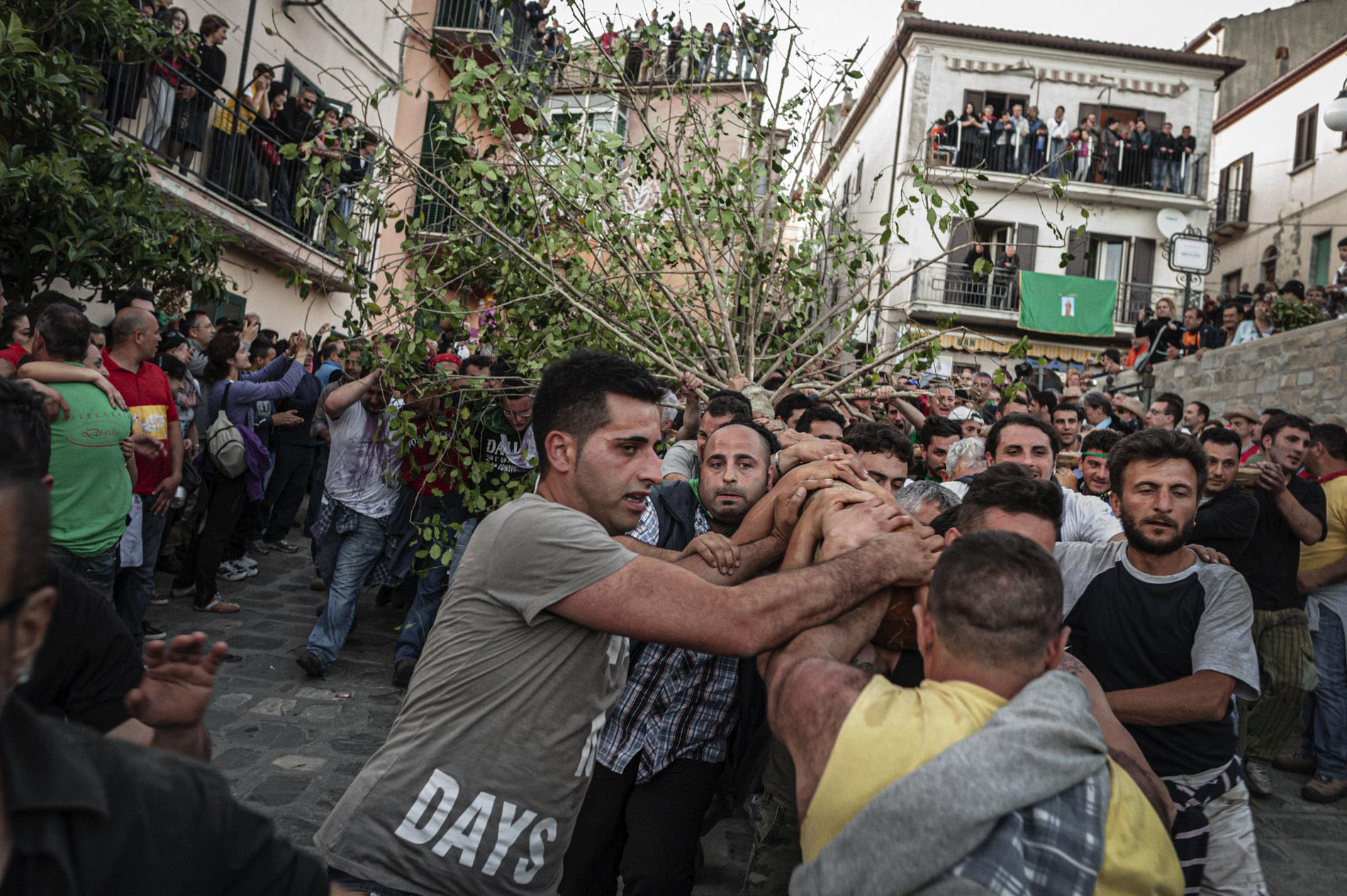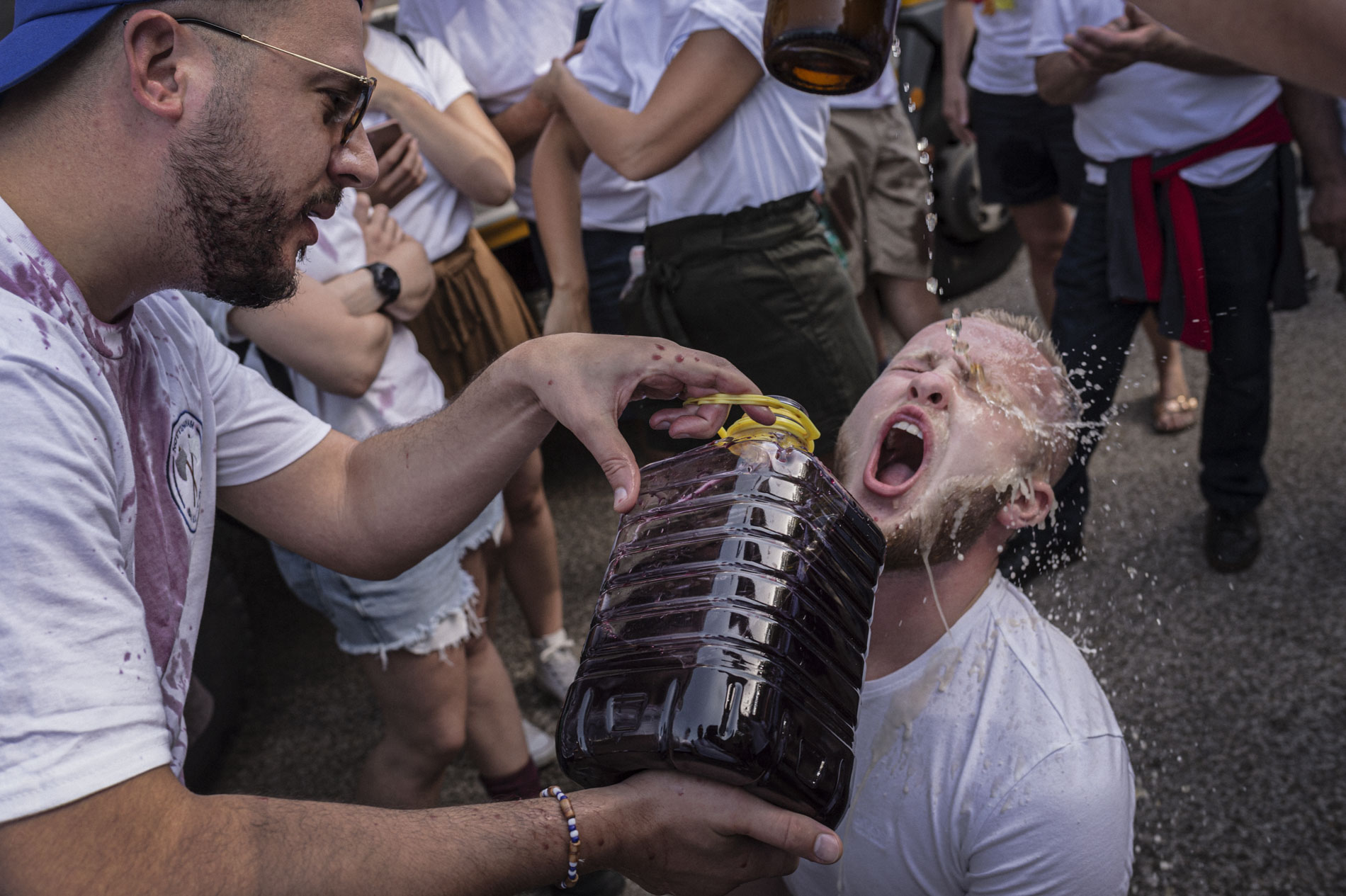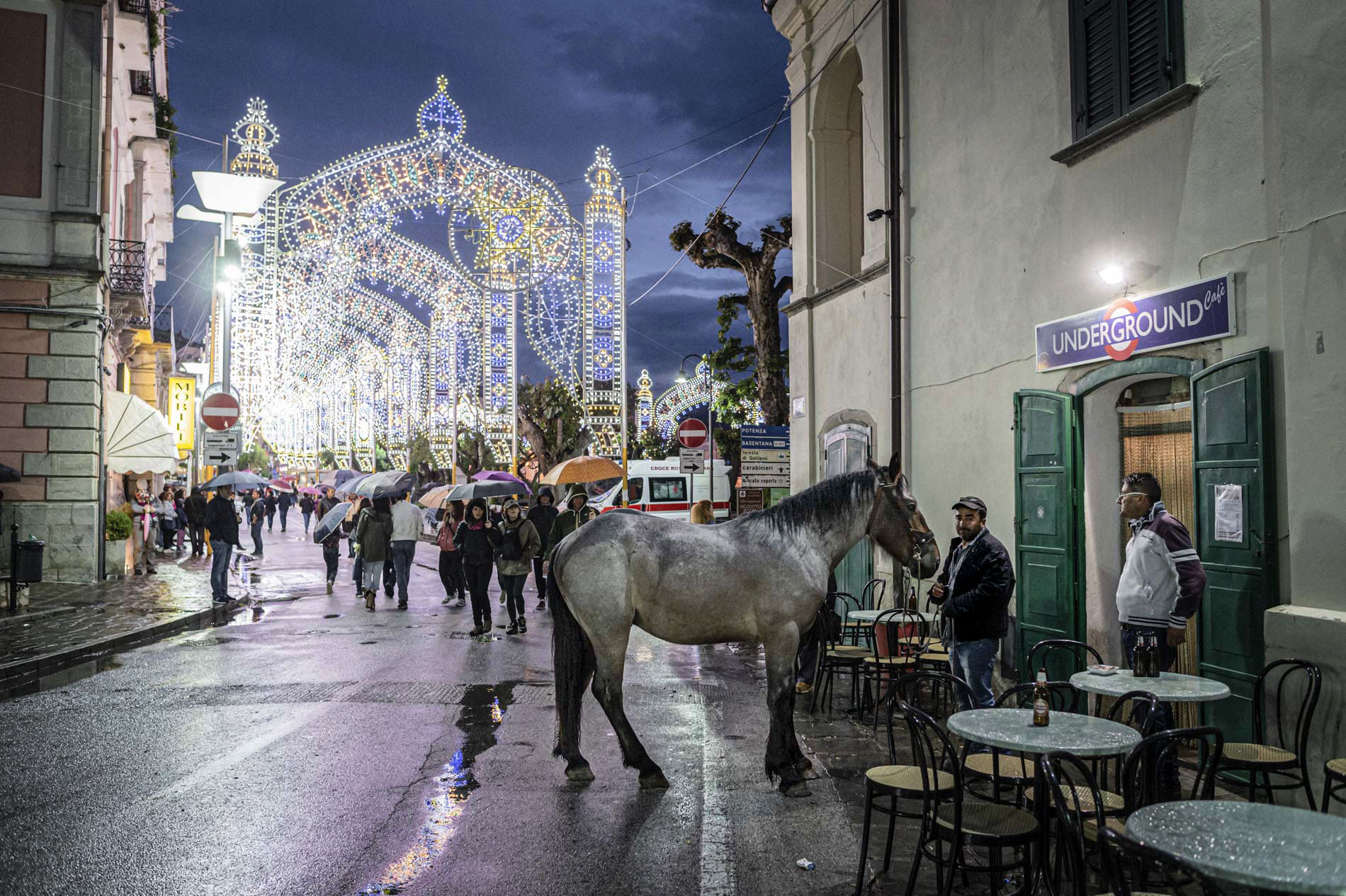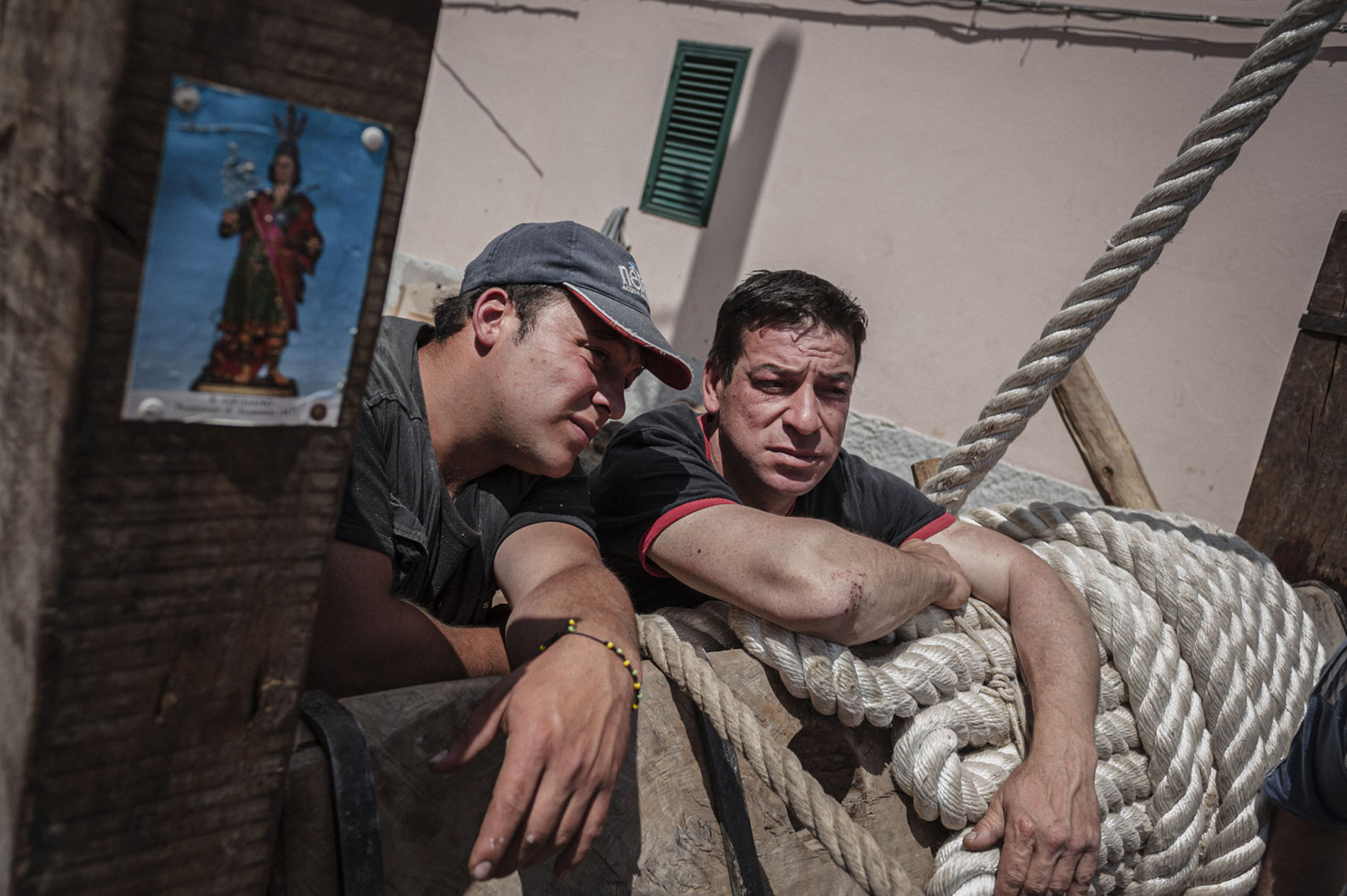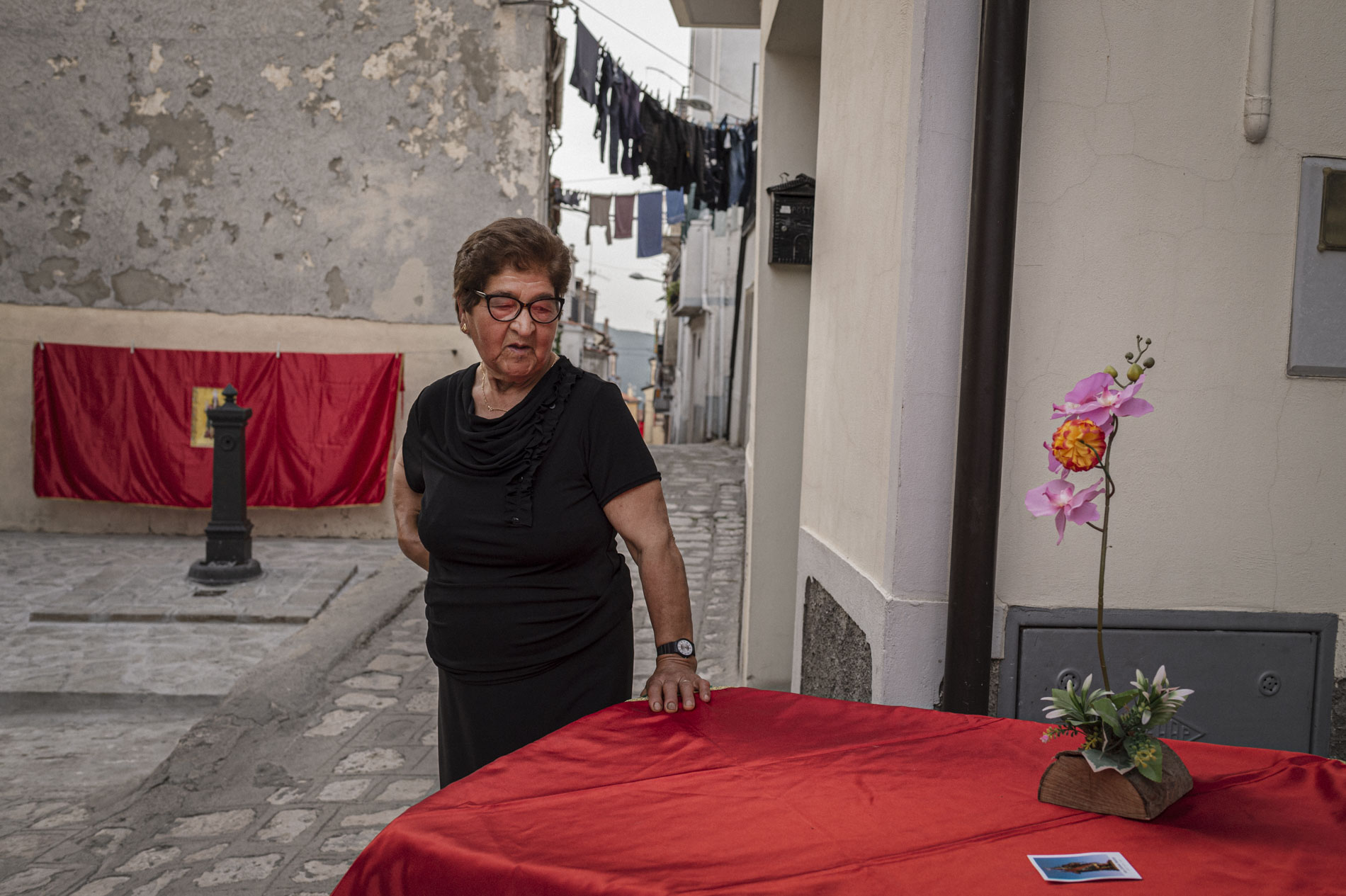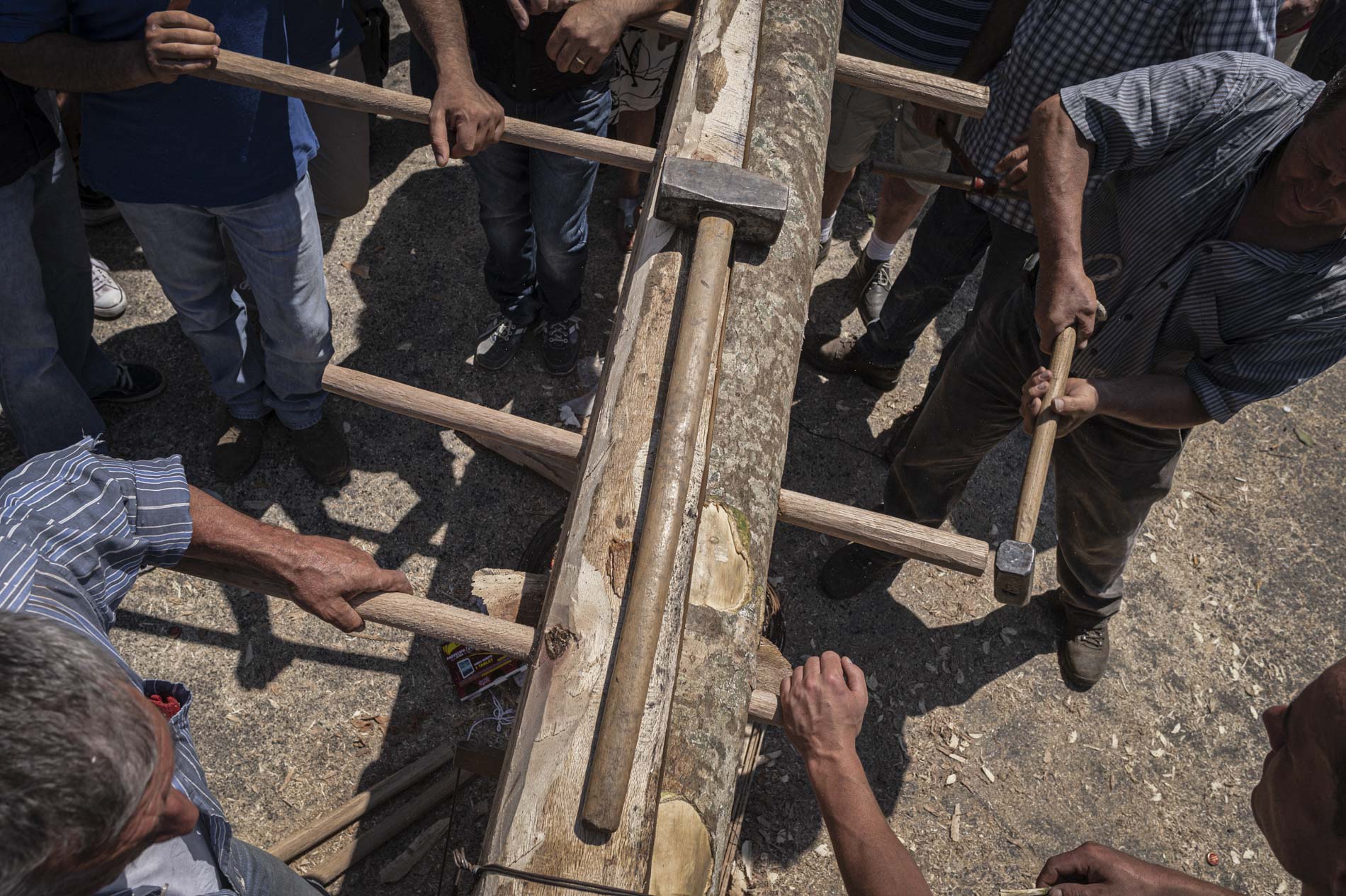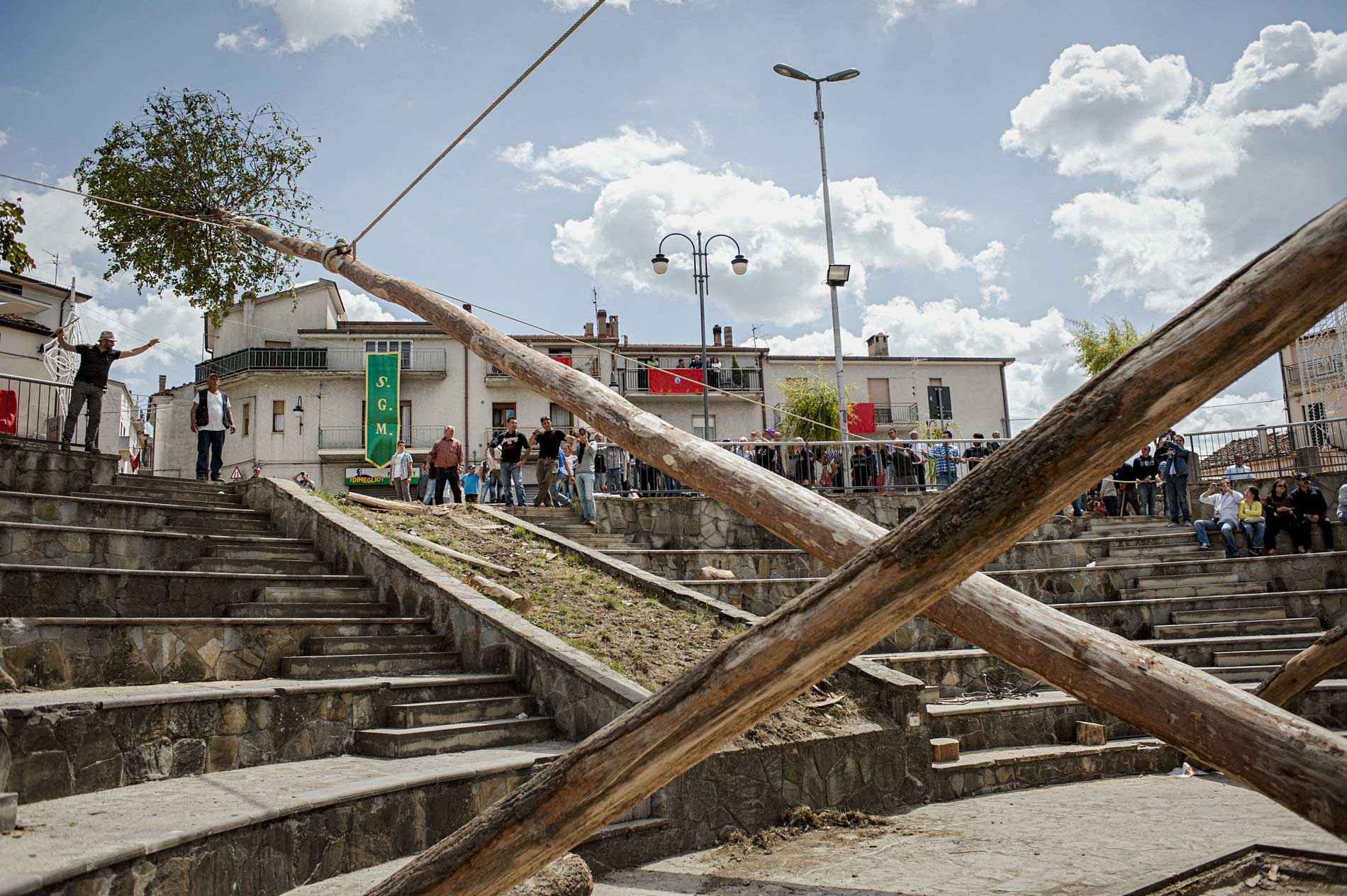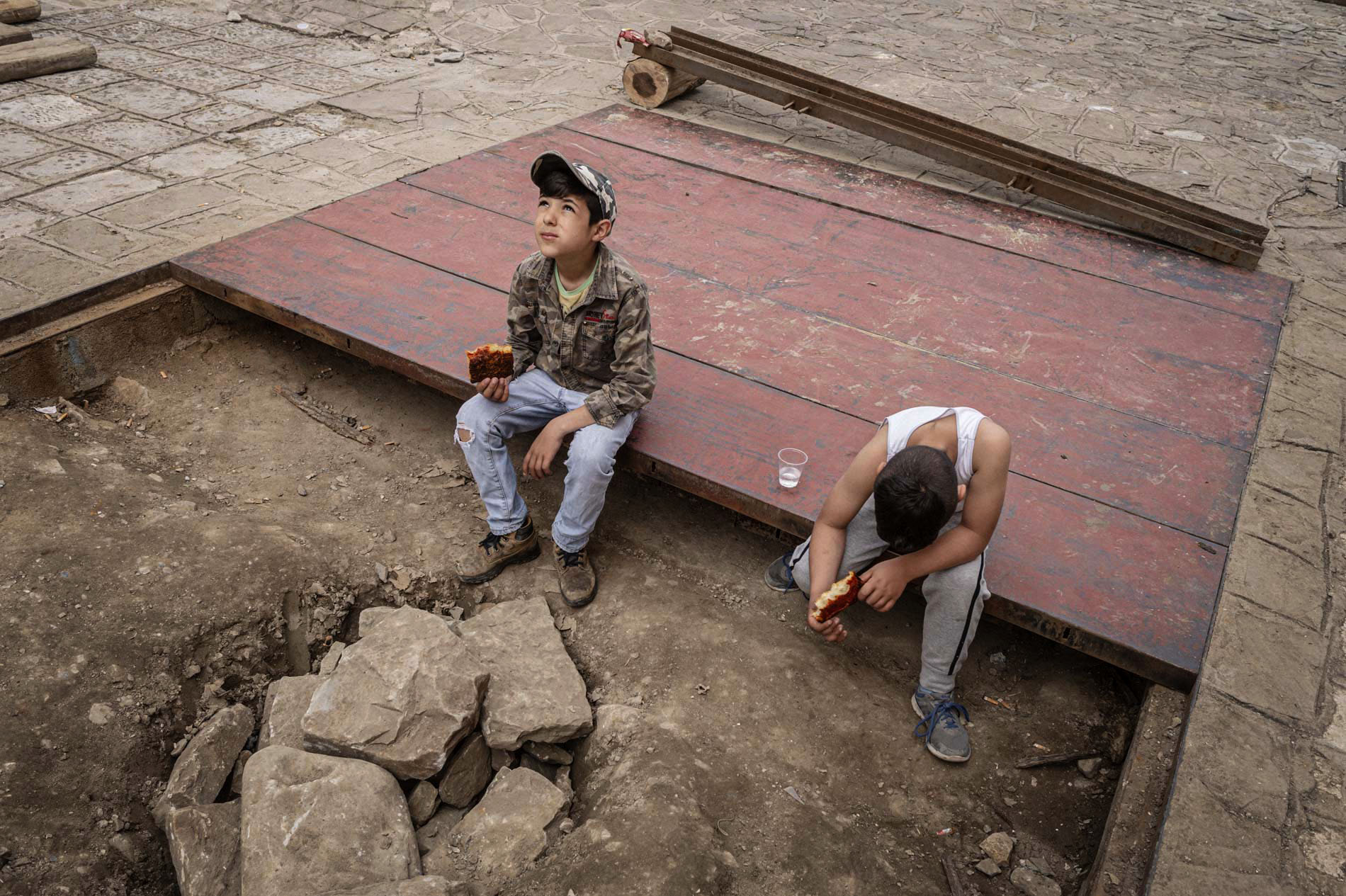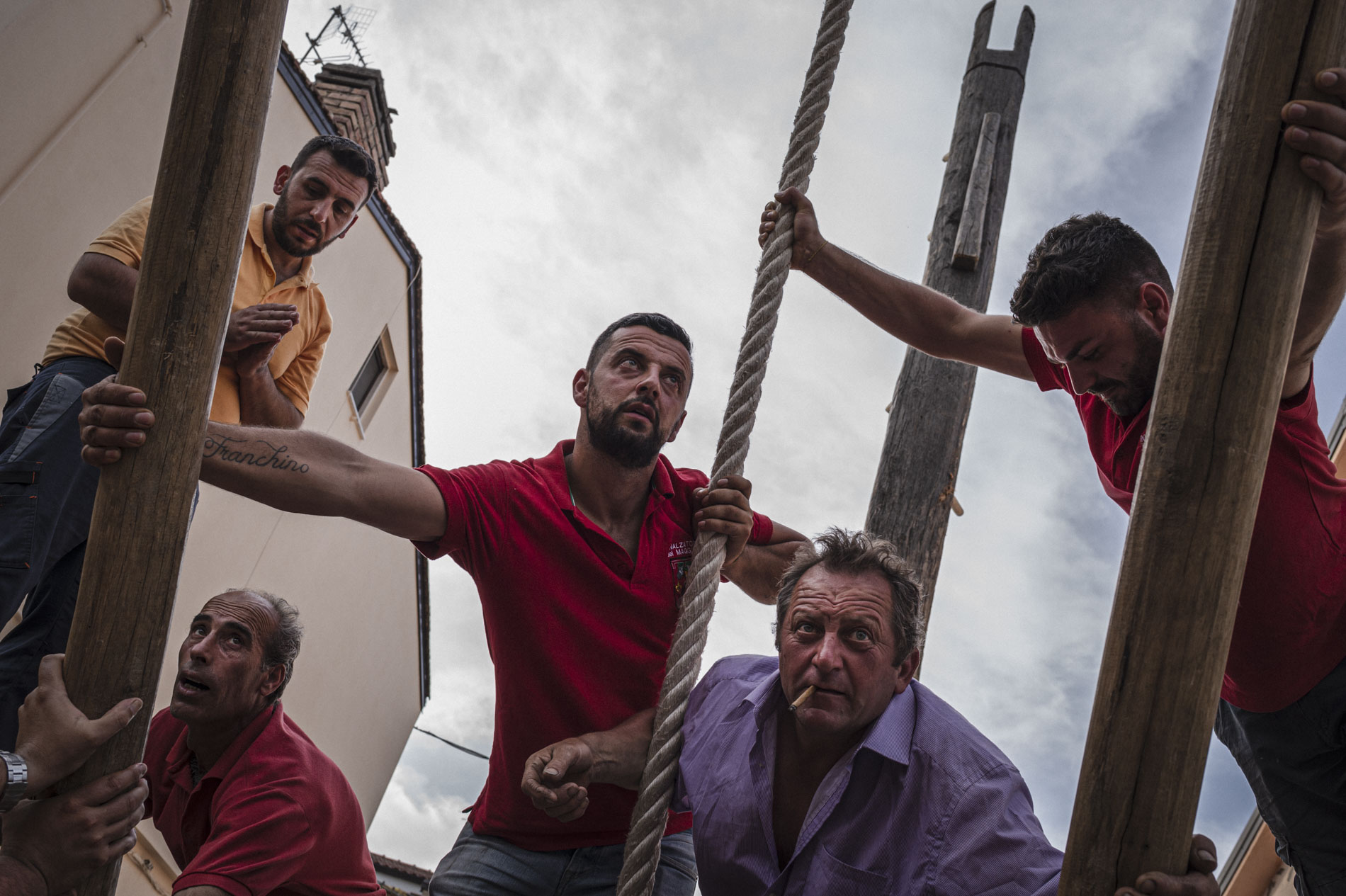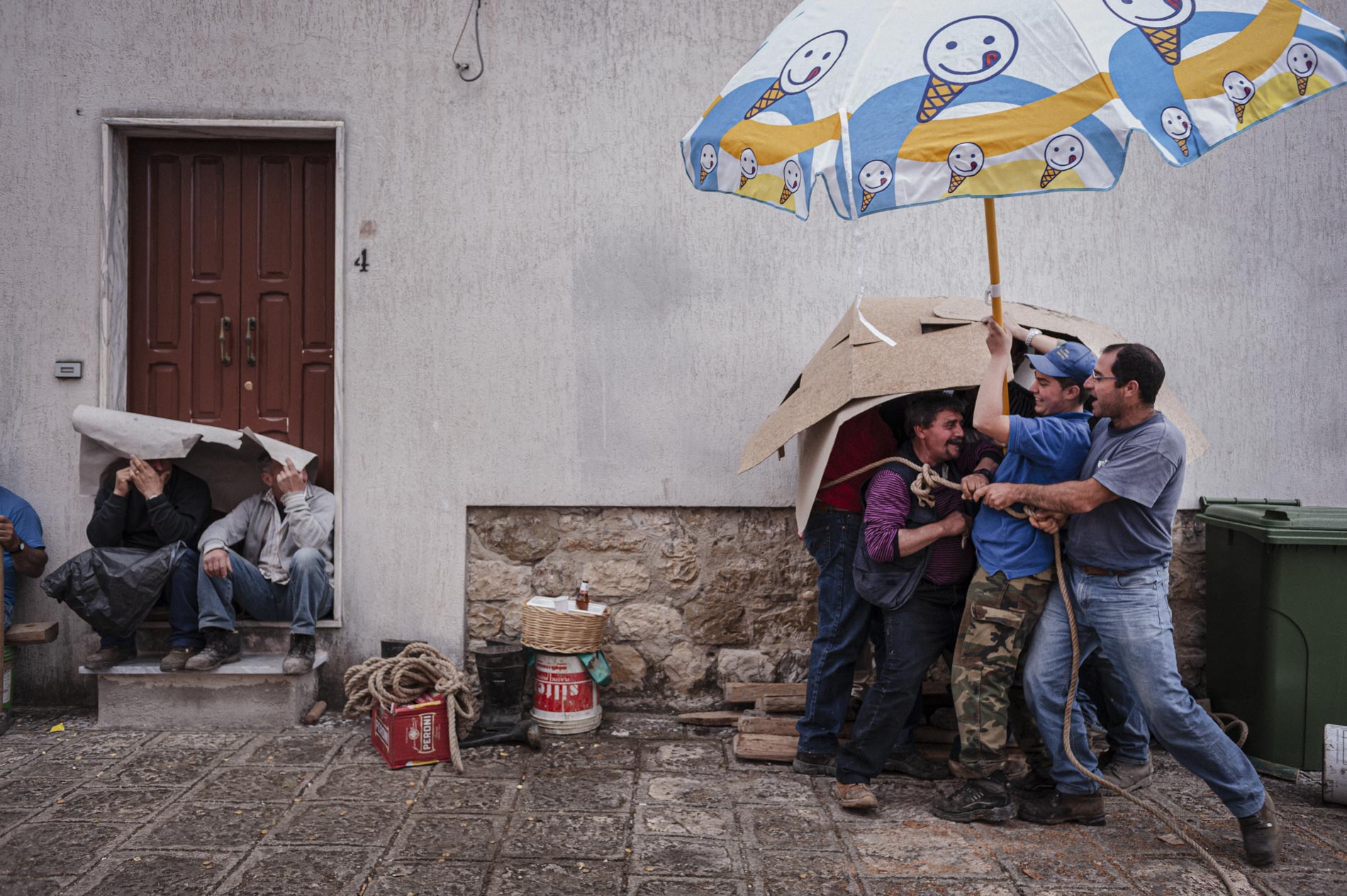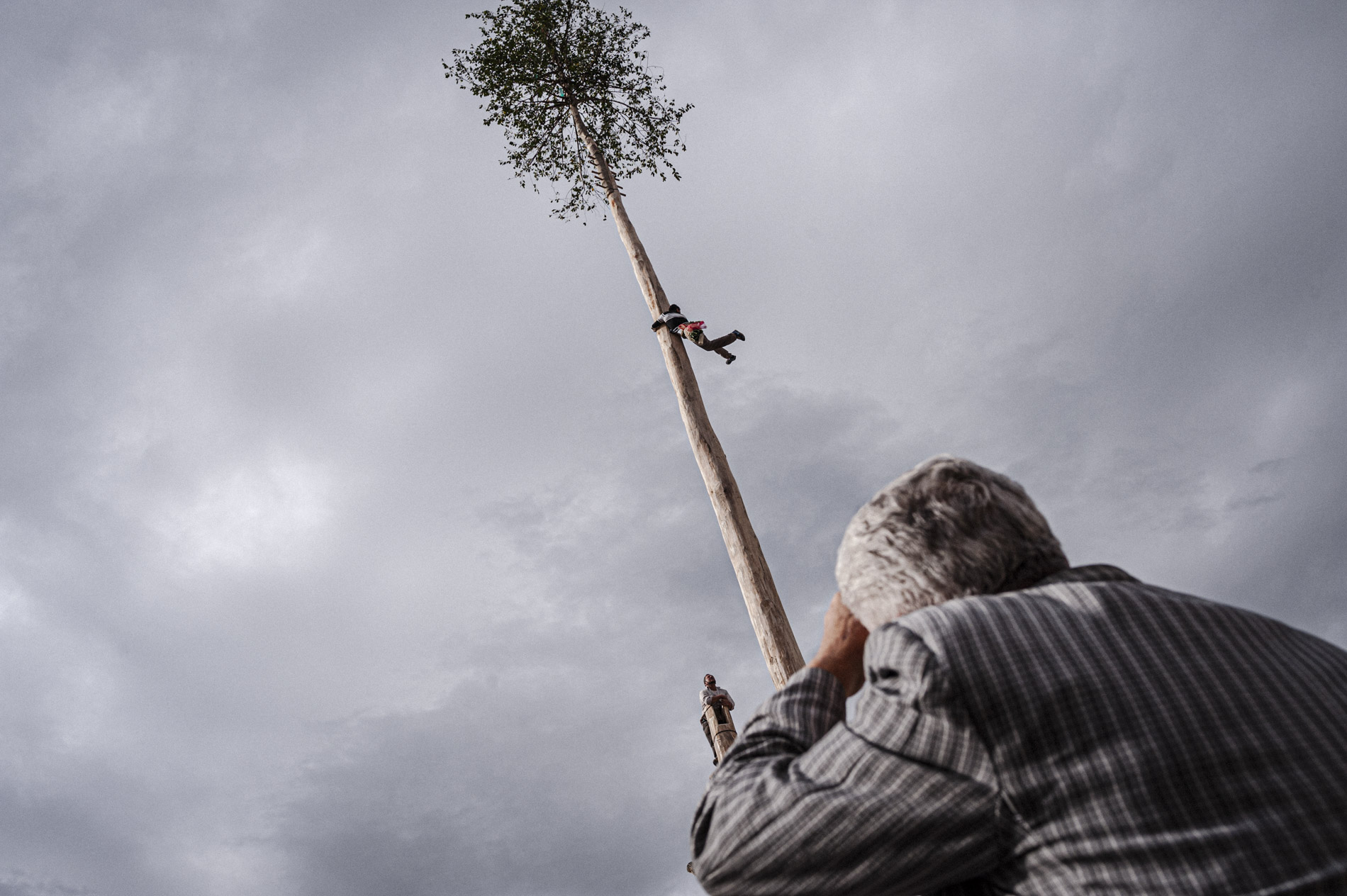TWO TREES, ONE TREE
“Two Trees, On Tree” is a photographic work on the Maggio Festival of Accettura – Maggio di Accettura - is an ancient arboreal ritual that is celebrated every year in Accettura, a mountain village of just over two thousand inhabitants in the province of Matera, on the borders of the Lucanian Dolomites. The spring cult party turns into a real collective identity. In a cultural context that has roots in the religious imagery of the ancient Mediterranean world, anchored to the cult of "Mother Earth" and of agricultural fertility, the original cult of the tree, probably introduced by the Longobard colonists, found favorable ground, becoming one of the most popular traditional spring festivals, and considered to date, by UNESCO, one of the most beautiful festivals in the Mediterranean. The Maggio di Accettura which is actually made up of the union of two different trees, the Turkey oak and the holly, taken in two different woods (the Montepiano forest on the east of Accettura and the Gallipoli Cognato forest on the west of Accettura ) is a symbol of contamination and renewed energy released by the same "graft", also identified as the marriage of trees. The actors in the game at this incredible party are the Maggio (a large Turkey oak) and the Cima (a holly plant) and the respective sides of the "maggiaioli" and "cimaioli" who take care of transporting their trees, from the forest to the Accettura country; the Maggio using oxen, the Cima on the shoulder. The two processions proceed, among folk songs and dances, to the rhythm of music sung by the band of the town. Long breaks dedicated to moments of sicialization and refreshment with wine and typical local products are not missing. Many are the central moments of the festival, such as the transport of the Maggio and the Cima that represent a moment of extraordinary theatricality, between shouts of encouragement and performances of physical strength. Once man reach the amphitheater, in the center of Accettura, the "nuptial" ritual is completed: the Cima is grafted onto the Maggio and together they are raised. In the meantime, the procession of the Saint Patron, San Giuliano, the religious aspect of the festival, flows. Betweeb cente (construction of candles carried on the head), statues of San Giuliano, religious paintings, devout women and men, trees, winches, wine and food, the four days of celebration are consumed quickly, and the call of this feast is so great and its roots rooted in the local people, that the Maggio of Accettura also becomes an important opportunity to gather around a tree all the inhabitants which in the 70s and 80s were forced to emigrate to Germany, Switzerland and Great Britain, thus becoming a opportunity to return to their origins and bring families together.
TWO TREES, ONE TREE
“Two Trees, On Tree” è un lavoro fotografico sulla festa del Maggio di Accettura è un antico rito arboreo che si celebra ogni anno ad Accettura, un paese di montagna di poco più di duemila abitanti in provincia di Matera, ai confini delle Dolomiti Lucane. La festa da culto primaverile, si trasforma in una vera e propria identità collettiva. In un contesto culturale che ha radici nell’immaginario religioso dell’antico mondo mediterraneo, ancorato al culto della “Terra Madre” e della fecondità agraria, il culto originario dell'albero, probabilmente introdotto dai coloni longobardi, trovò terreno favorevole, divenendo una delle feste primaverili tradizionali popolari più importante, e ritenuta ad oggi, dall’UNESCO, una delle più belle feste del Mediterraneo. Il “Maggio di Accettura” che è di fatto costituito dall’unione di due alberi diversi, il cerro e l'agrifoglio, prelevati in due differenti boschi (il bosco di Montepiano ad est di Accettura e il bosco di Gallipoli Cognato ad Ovest di Accettura) è simbolo di contaminazione e rinnovata energia sprigionata dallo stesso “innesto”, identificato anche come matrimonio degli alberi. Gli attori in gioco in questa incredibile festa, sono il Maggio (un cerro di grandi dimensioni) la Cima (una pianta di agrifoglio) e i rispettivi schieramenti dei “maggiaioli” e “cimaioli” che si preoccupano di trasportare i rispettivi alberi, dal bosco al paese di Accettura; il Maggio attraverso i buoi, la Cima a spalla. I due cortei procedono, tra canti e balli popolari, a ritmo di musiche intonata dalla banda del paese. Non mancano lunghe pause dedicate a momenti di ristoro e collettività a base di vino e prodotti tipici. Molti i momenti centrali della festa, come ad esempio il trasporto del Maggio e della Cima che rappresenta un momento di straordinaria teatralità, tra grida di incitamento ed esibizioni di forza fisica. Una volta raggiunto l’anfiteatro, nel centro di Accettura, il rito “nuziale” è portato a compimento: la Cima viene innestata sul Maggio e insieme sono innalzati. Nel frattempo, scorre la processione del Patrono, San Giuliano, l’aspetto religioso della festa. Tra cente (costruzioni di candele portate in testa) statue di S.Giuliano, quadri religiosi, donne e uomini devoti, alberi, argani, vino e cibo, si consumano velocemente i quattro giorni di festa, ed è talmente grande il richiamo di questa festa e delle origini radicate negli accetturesi, che il Maggio di Accettura diventa anche un’importante occasione per riunire intorno ad un albero, tutti gli accetturesi che negli anni 70 e 80 sono stati costretti ad emigrare in Germania, Svizzera e Gran Bretagna, diventando così un’occasione per tornare alle proprie origini e riunire le famiglie.
